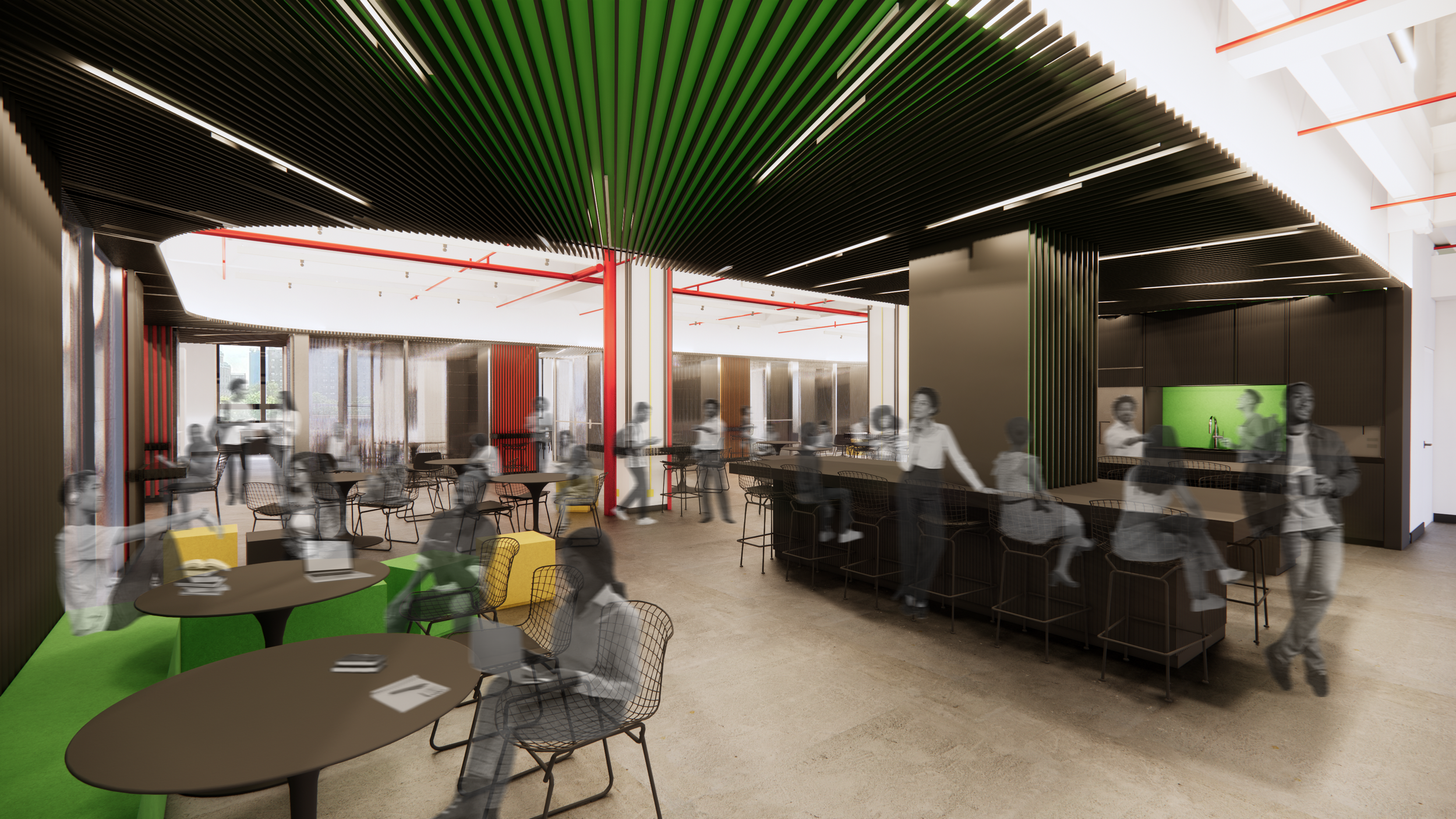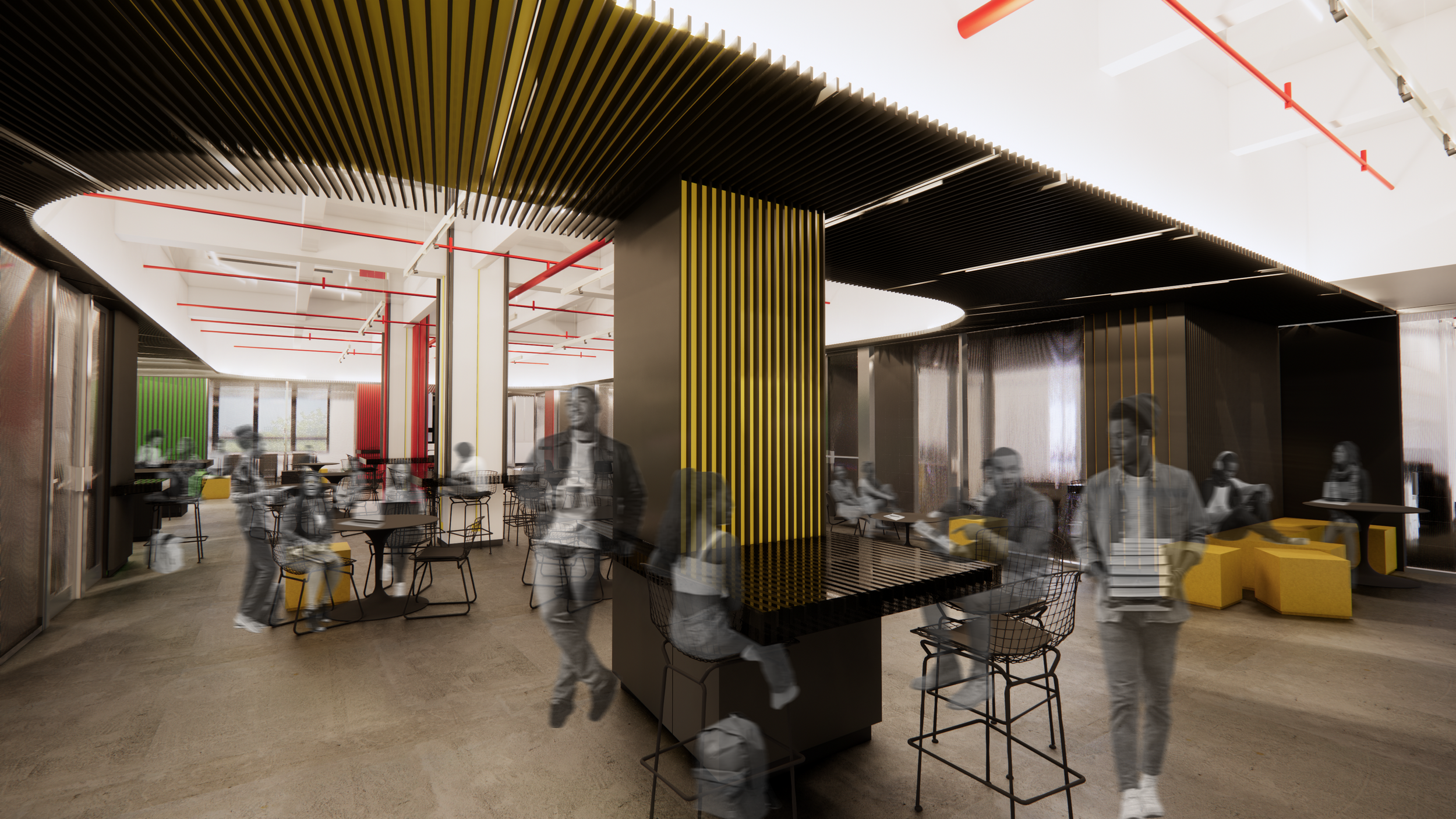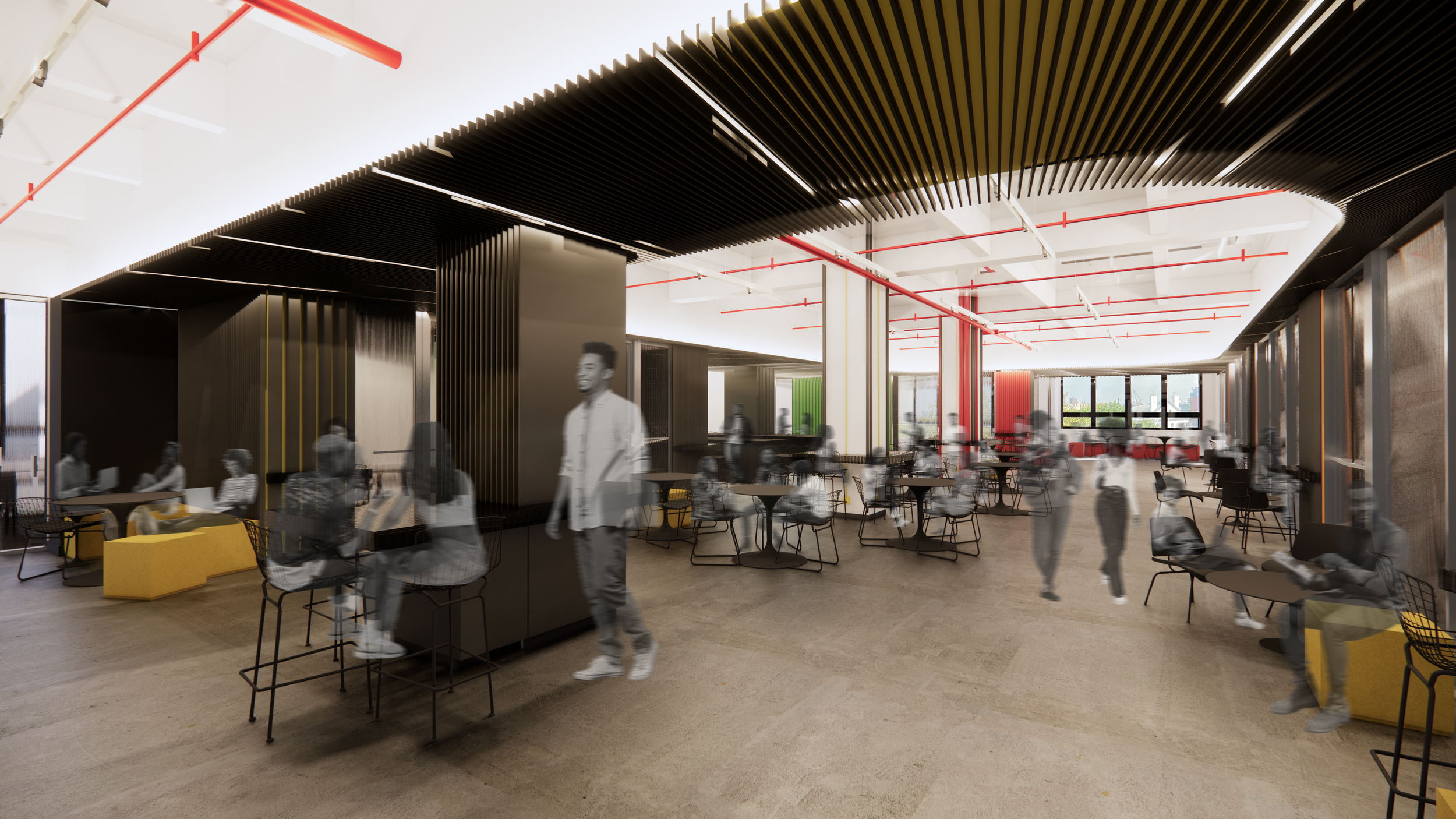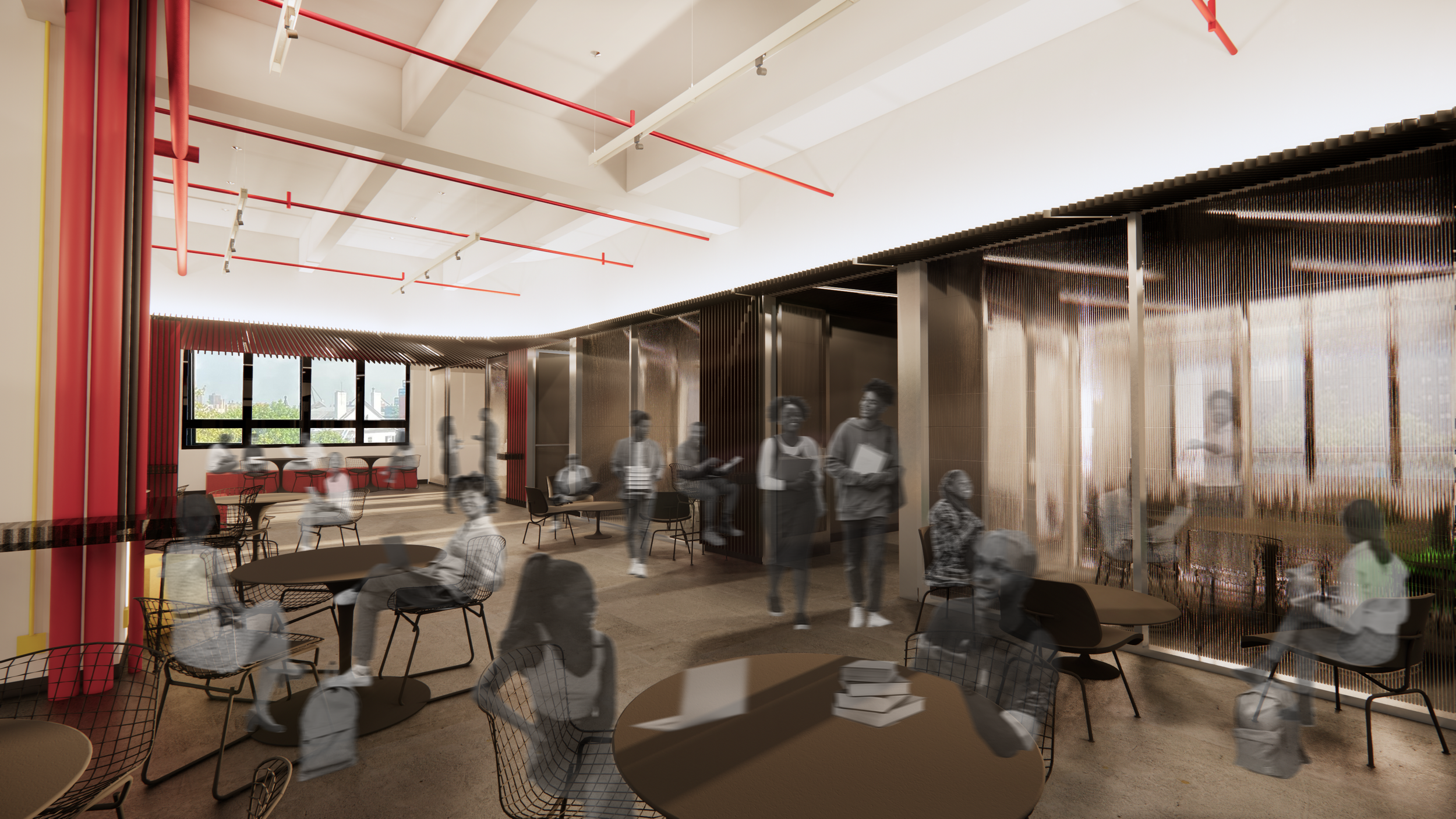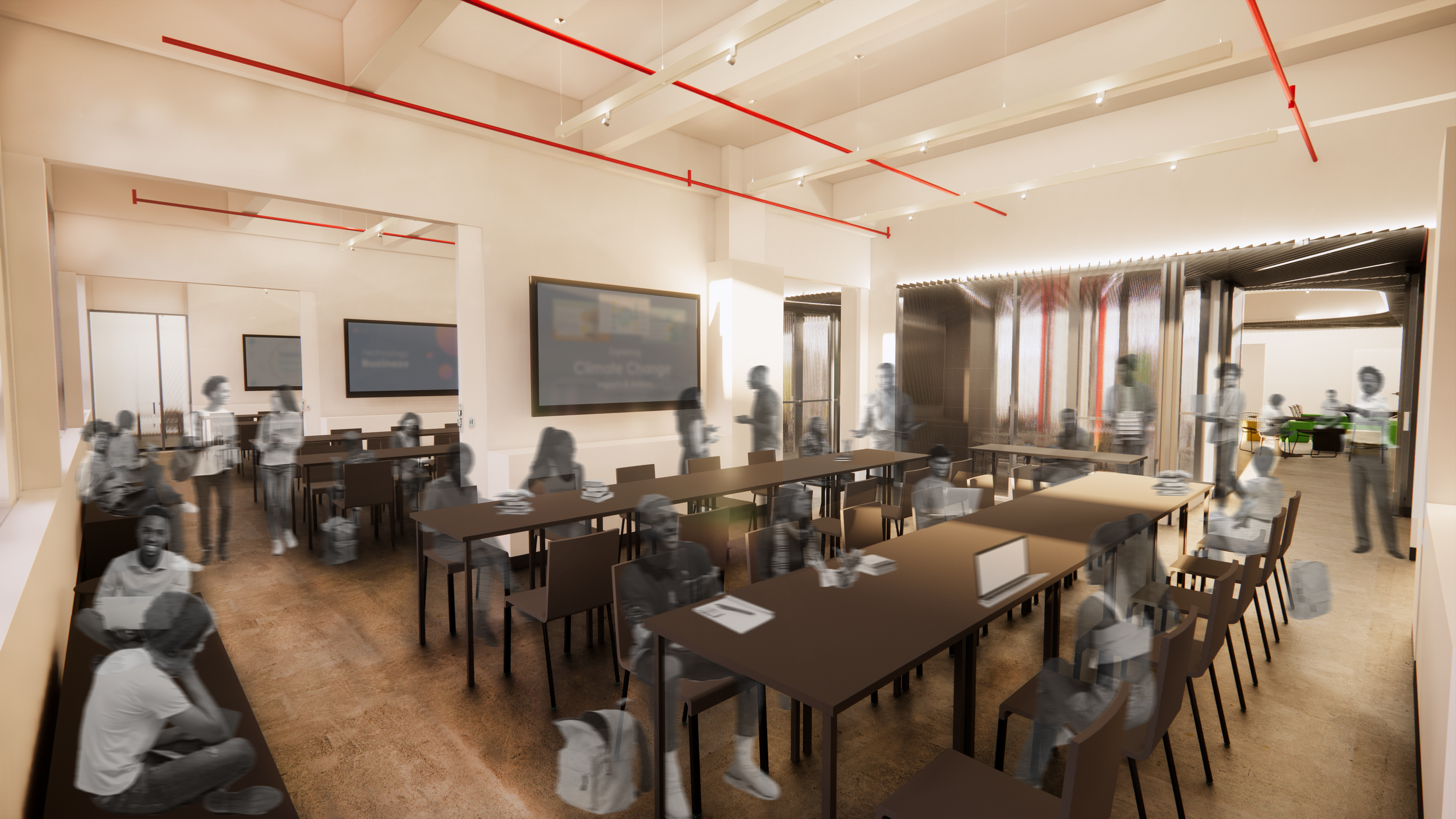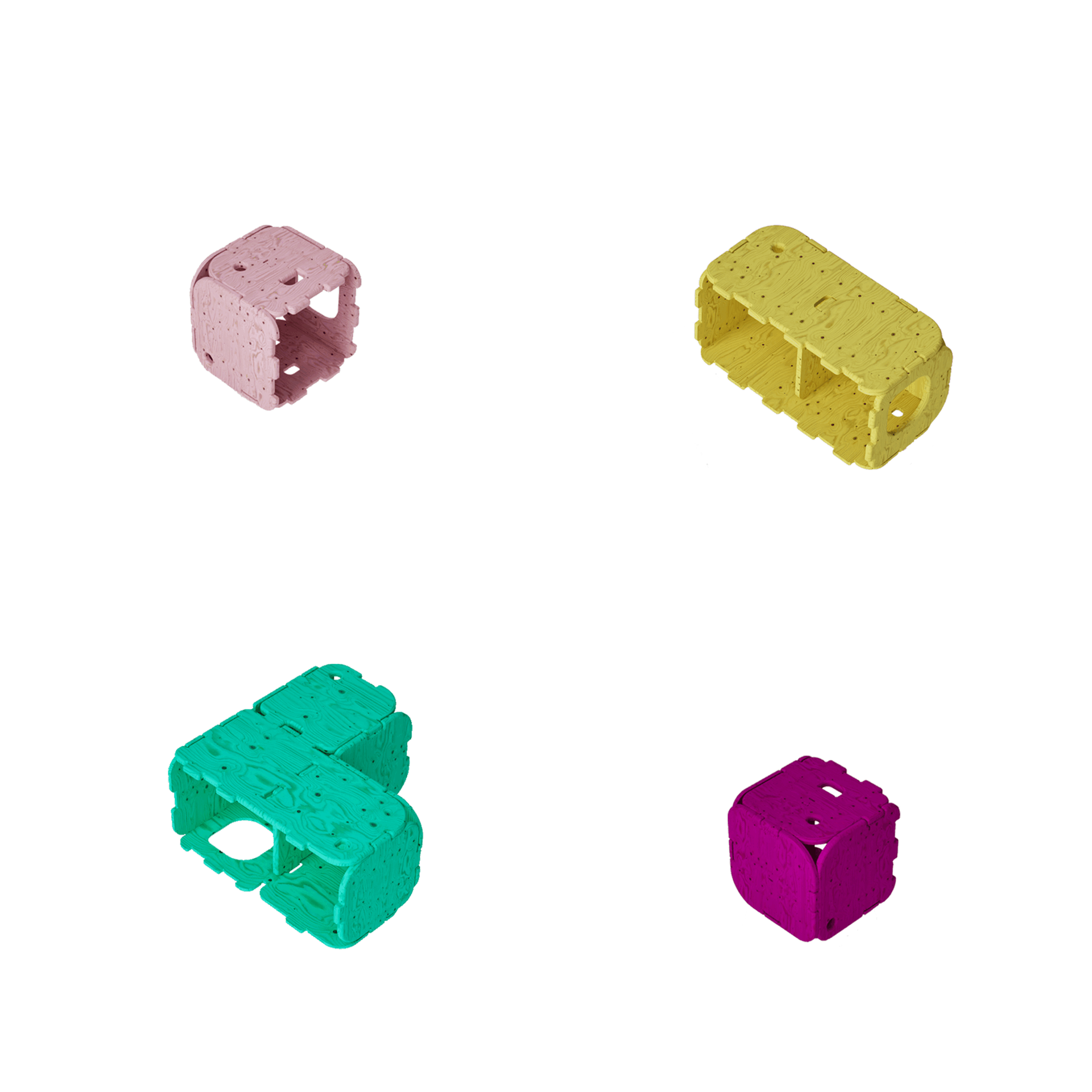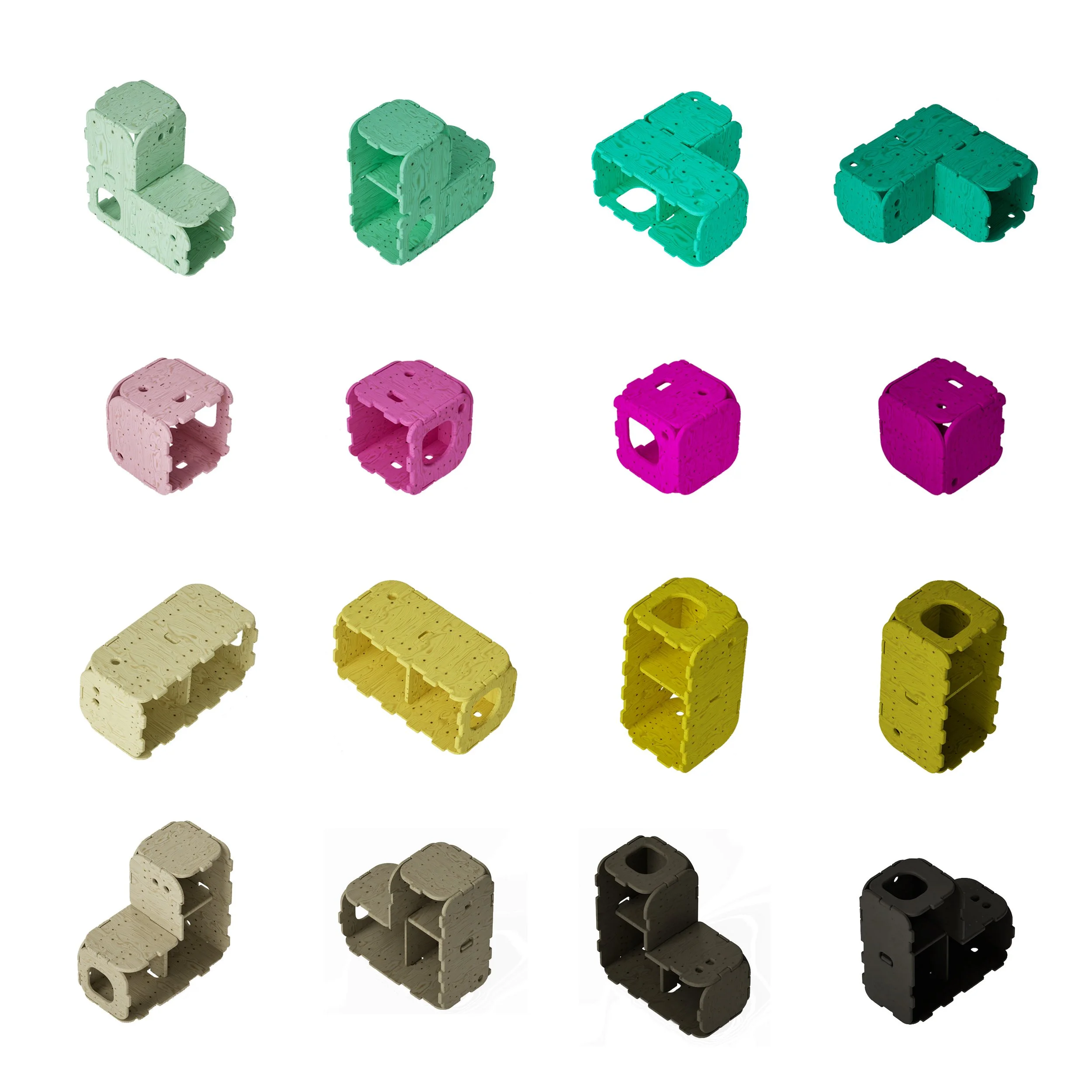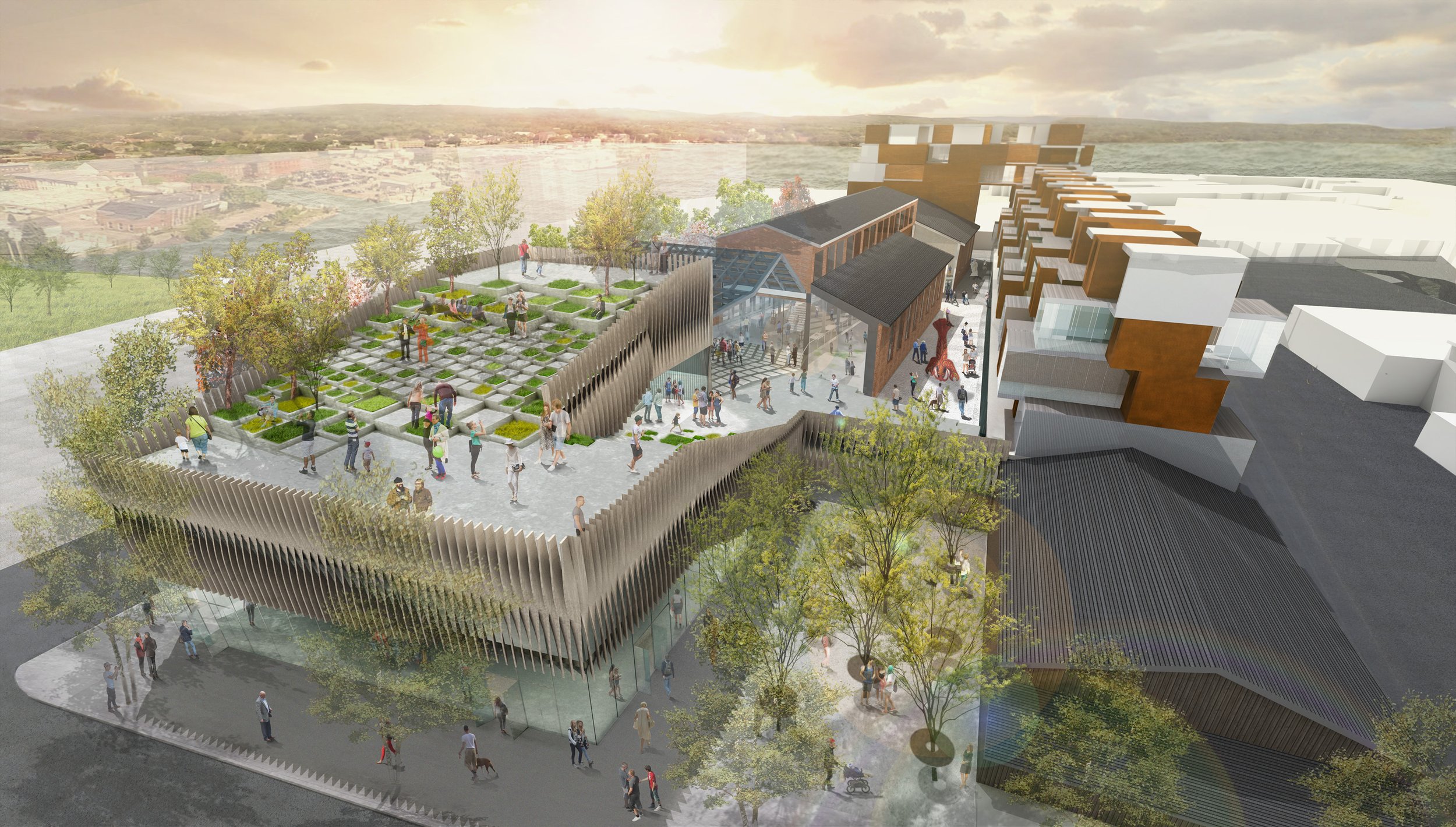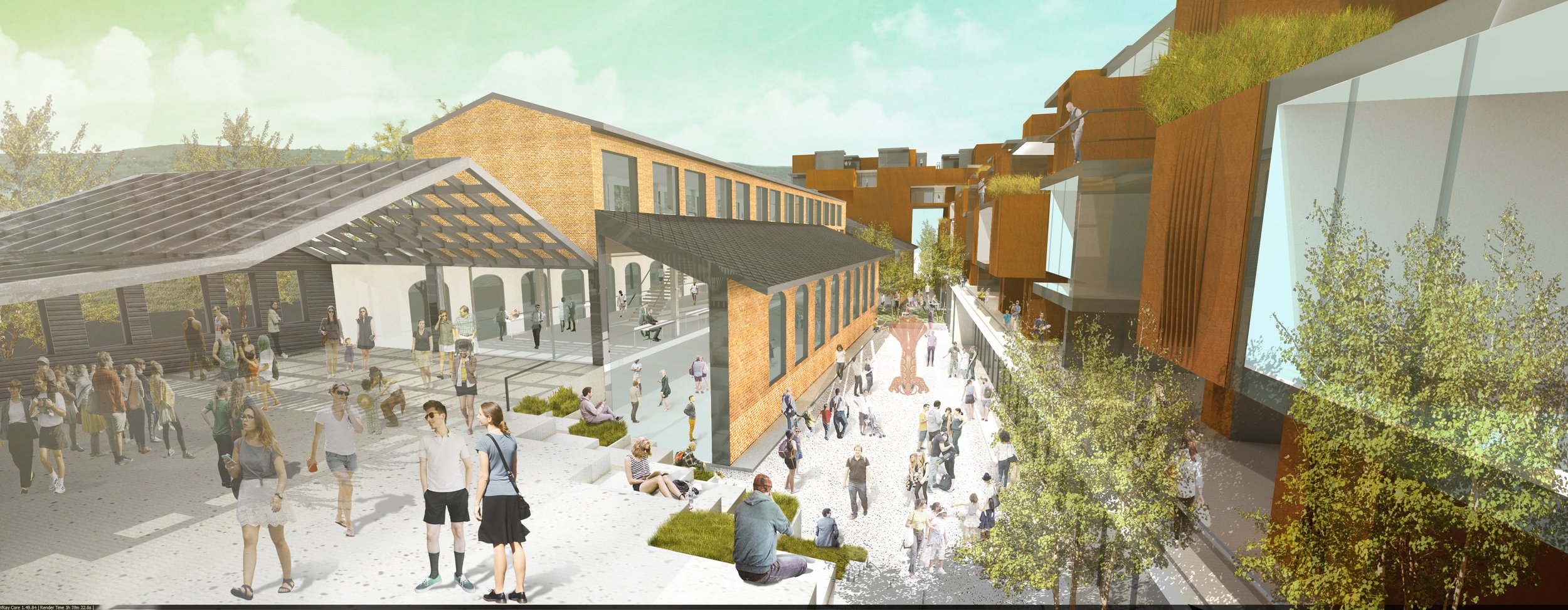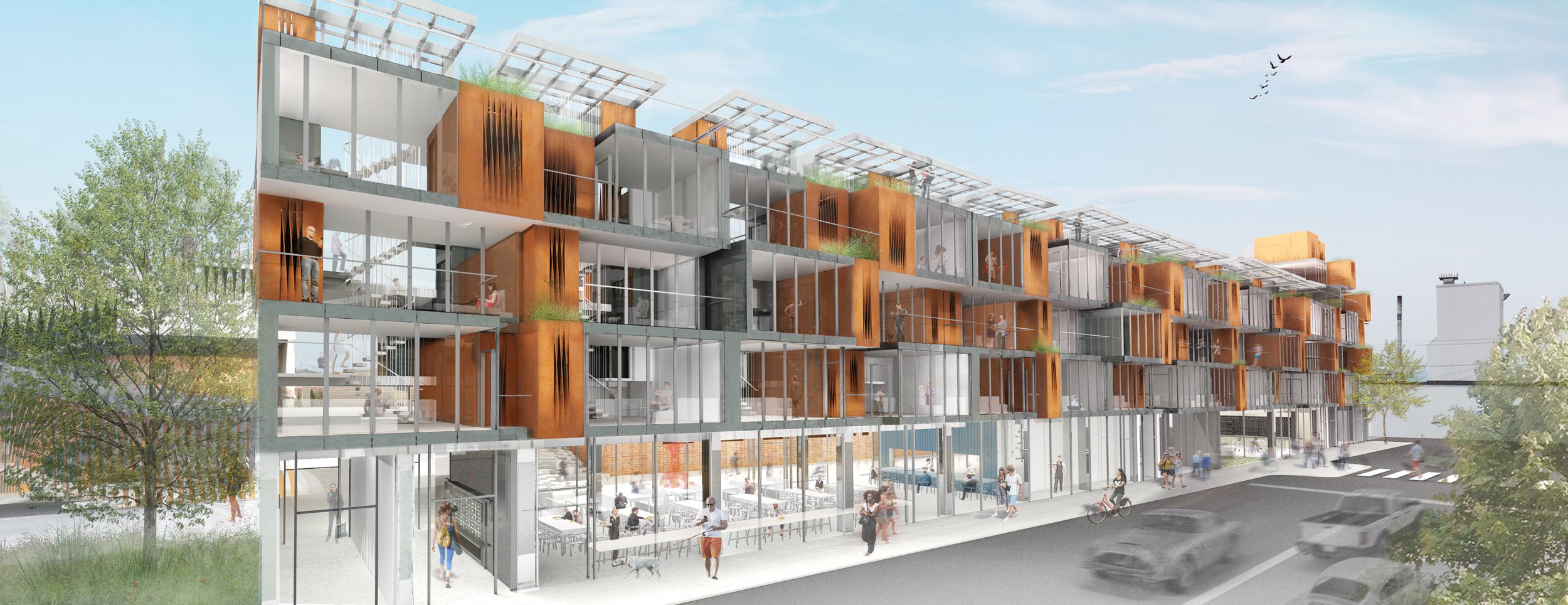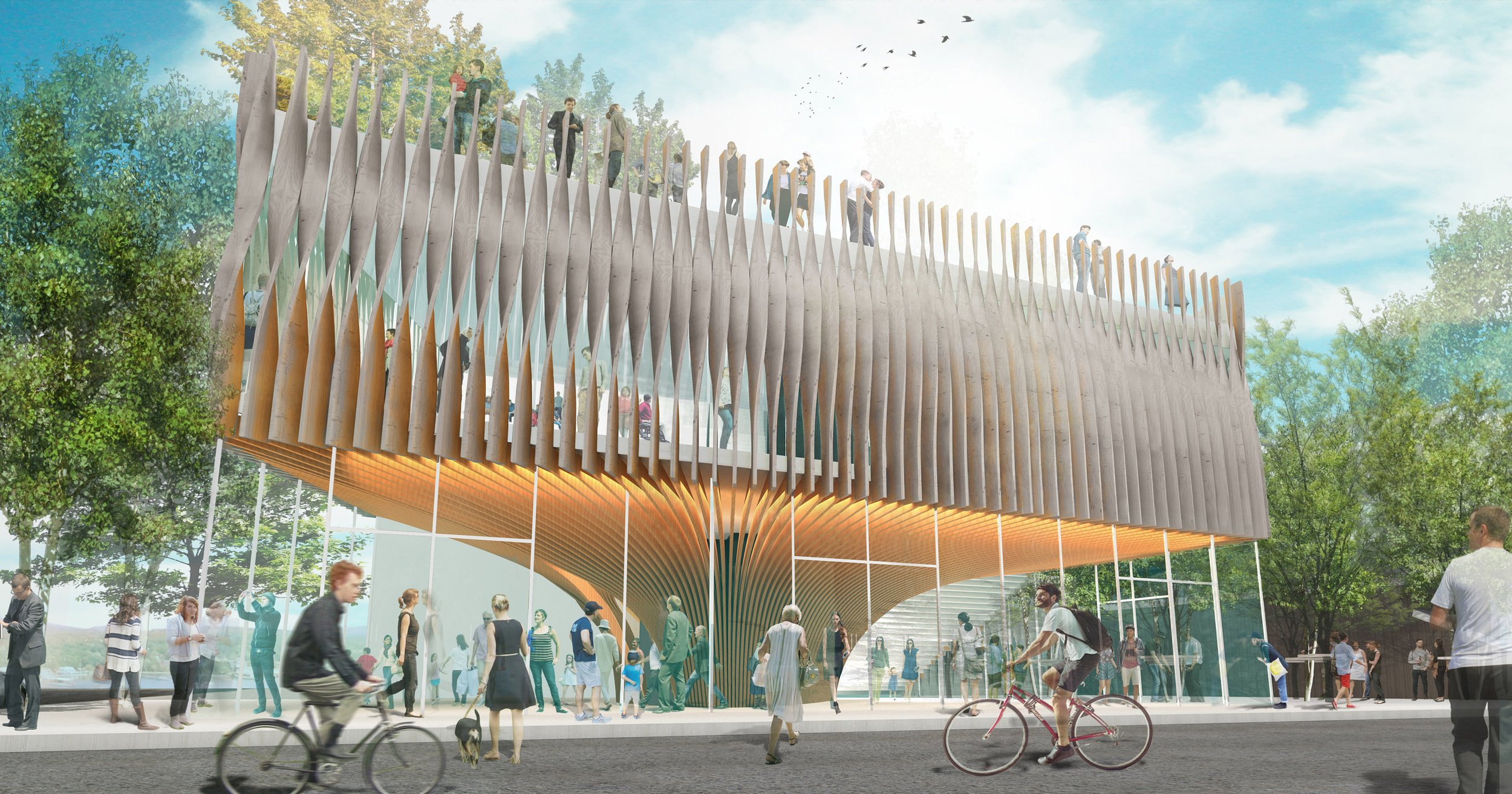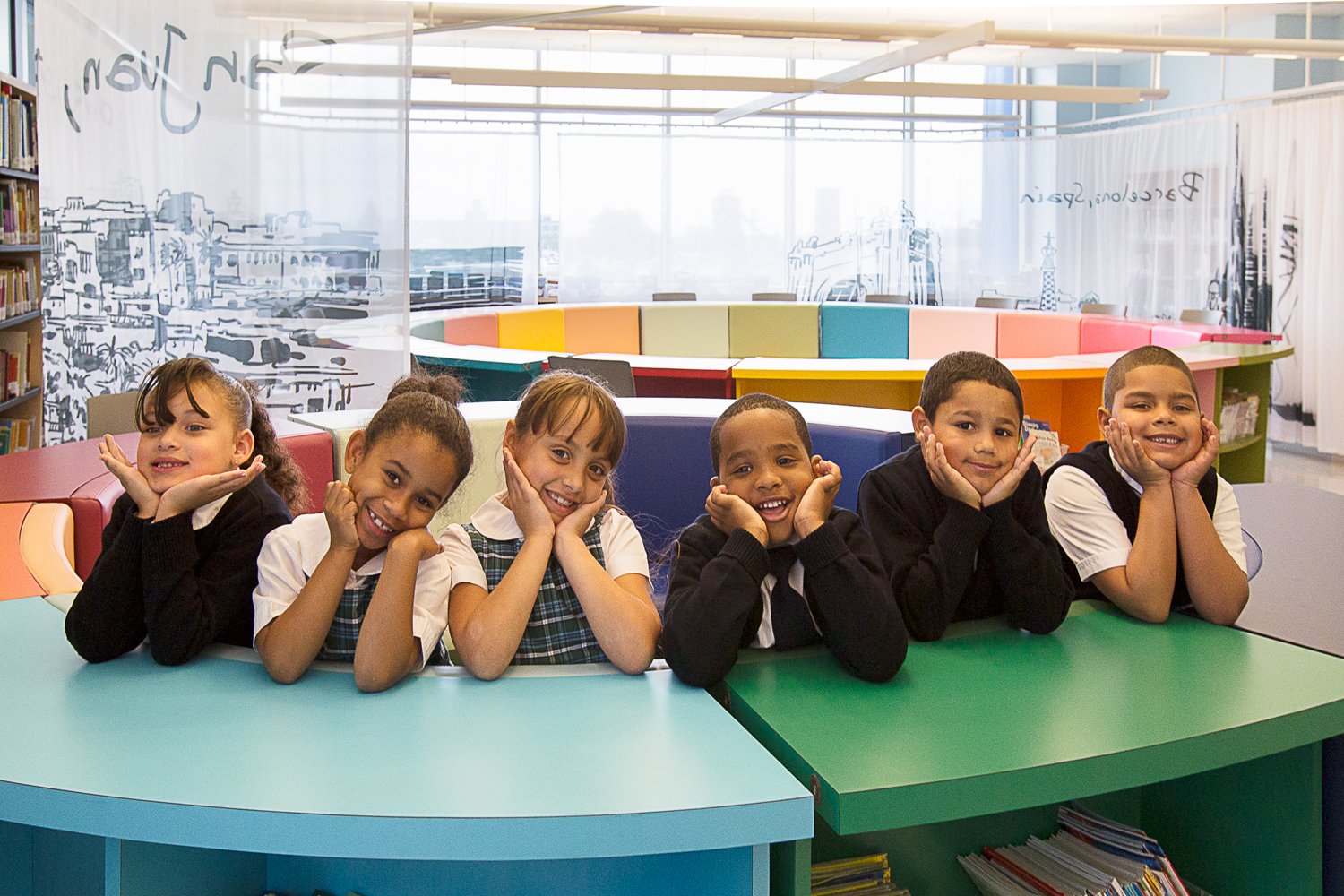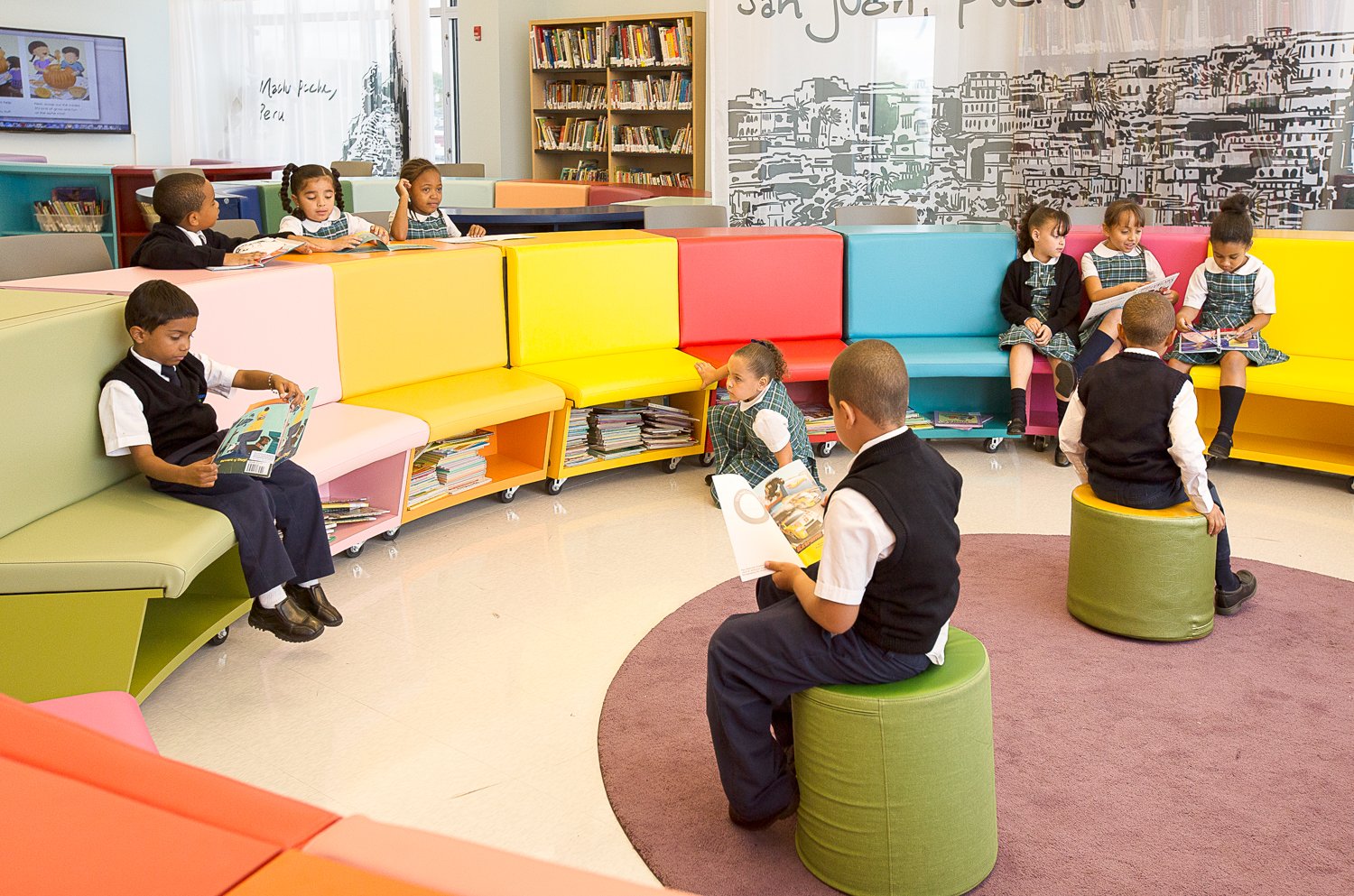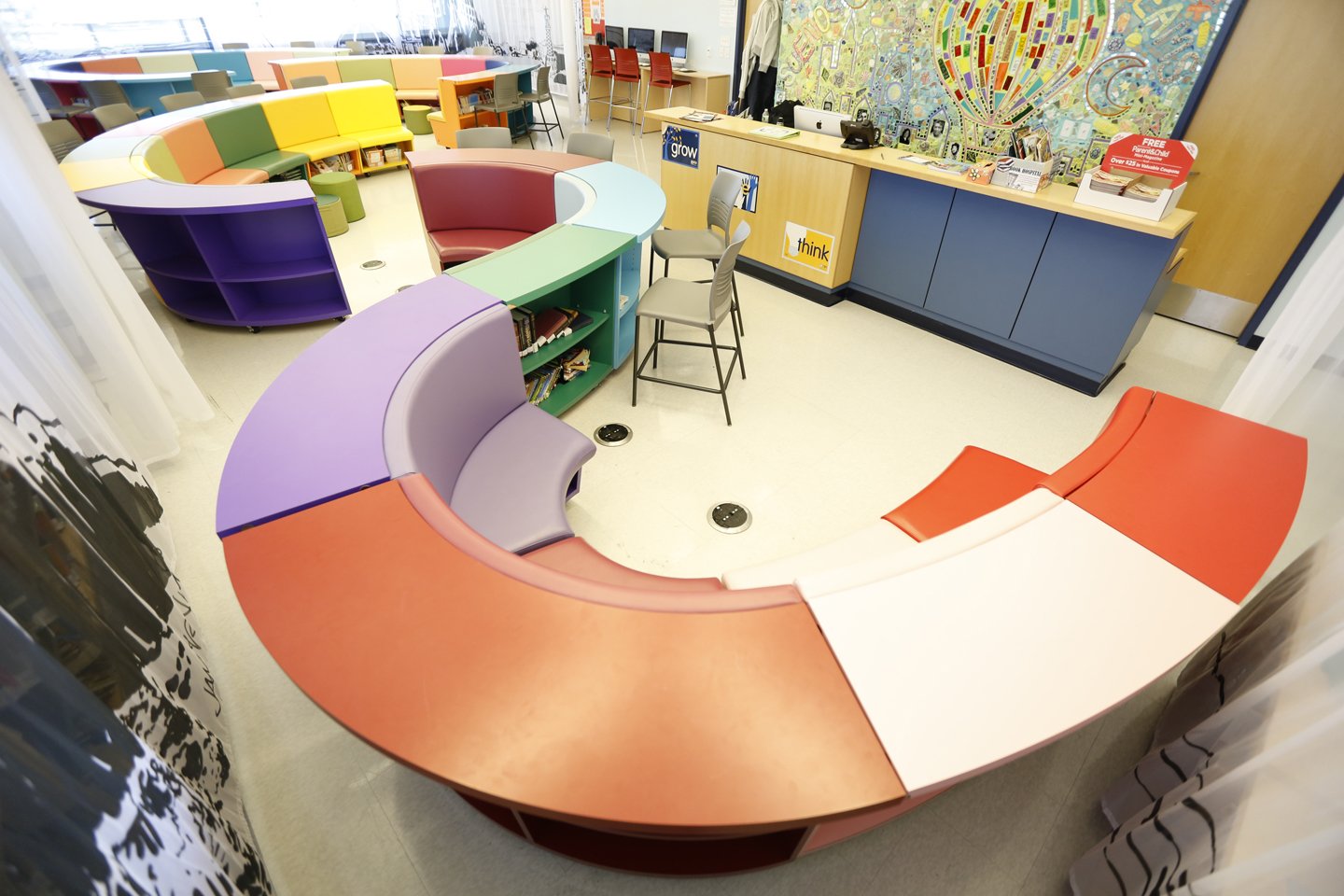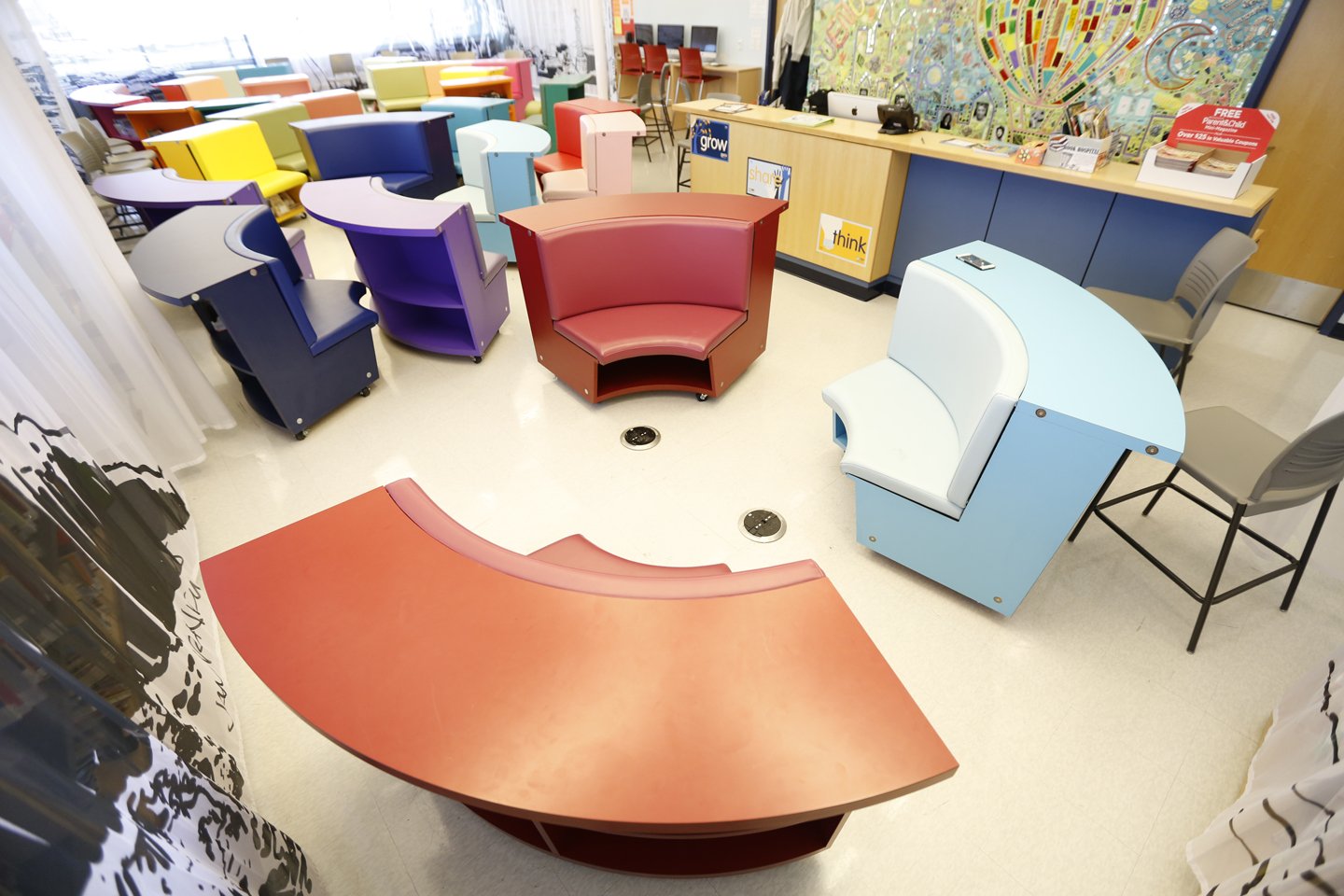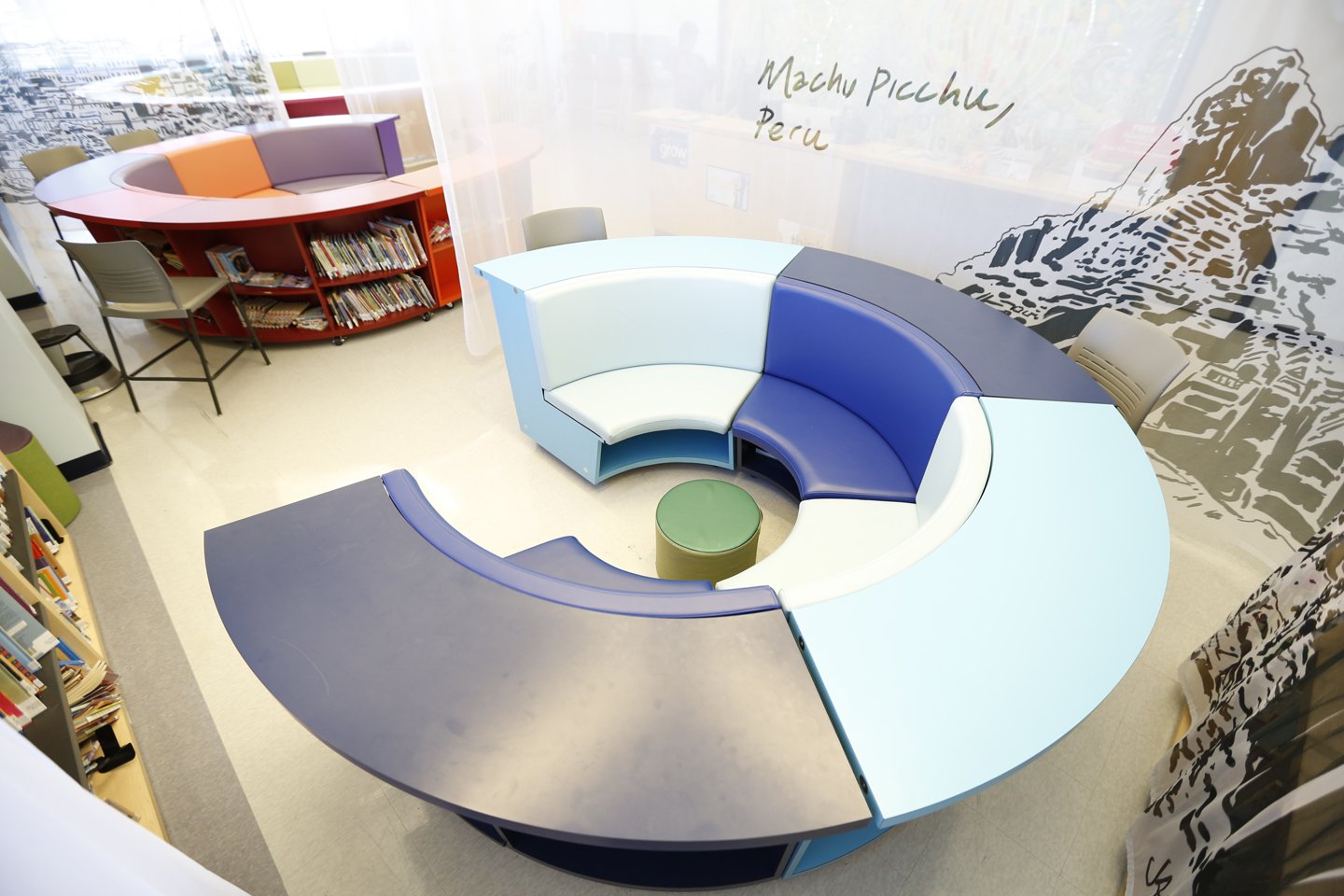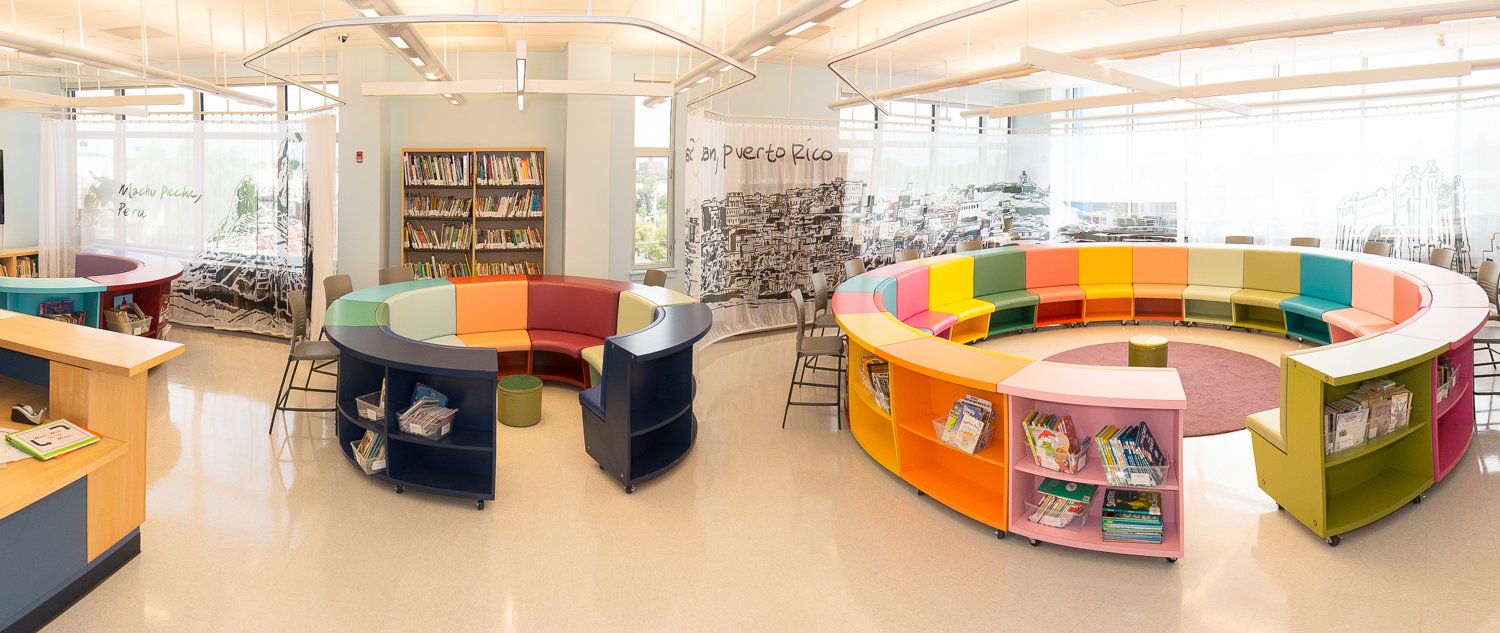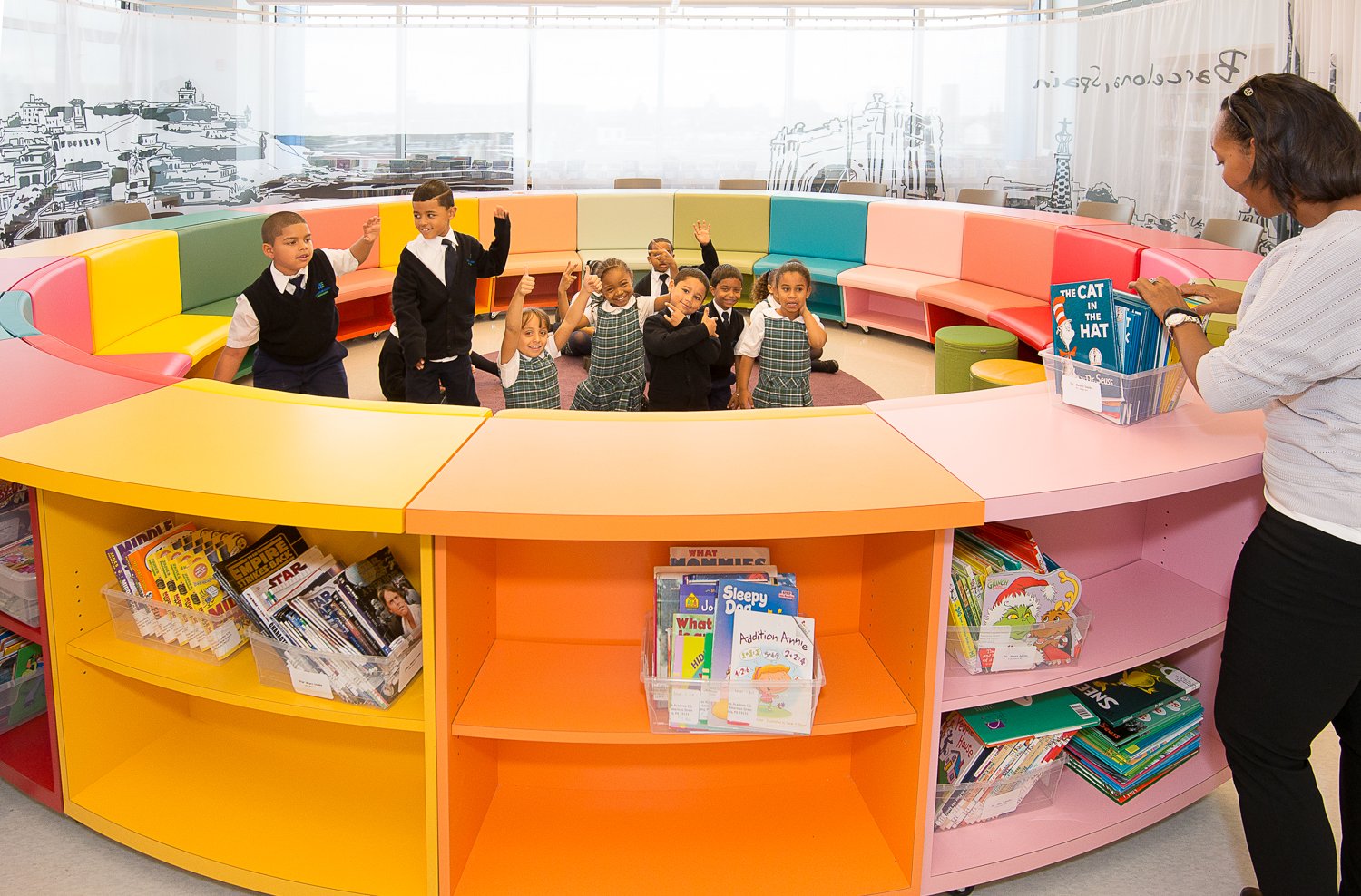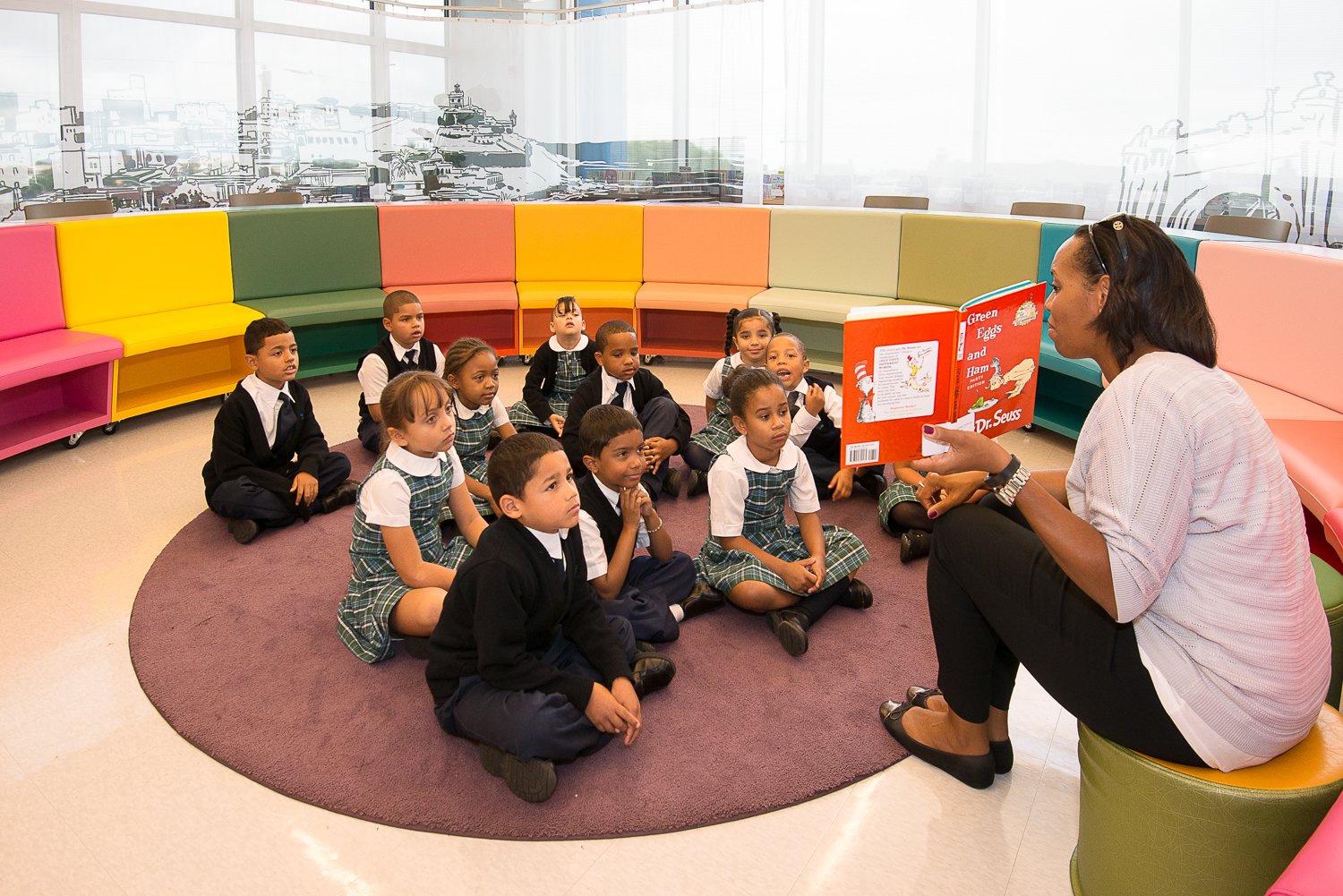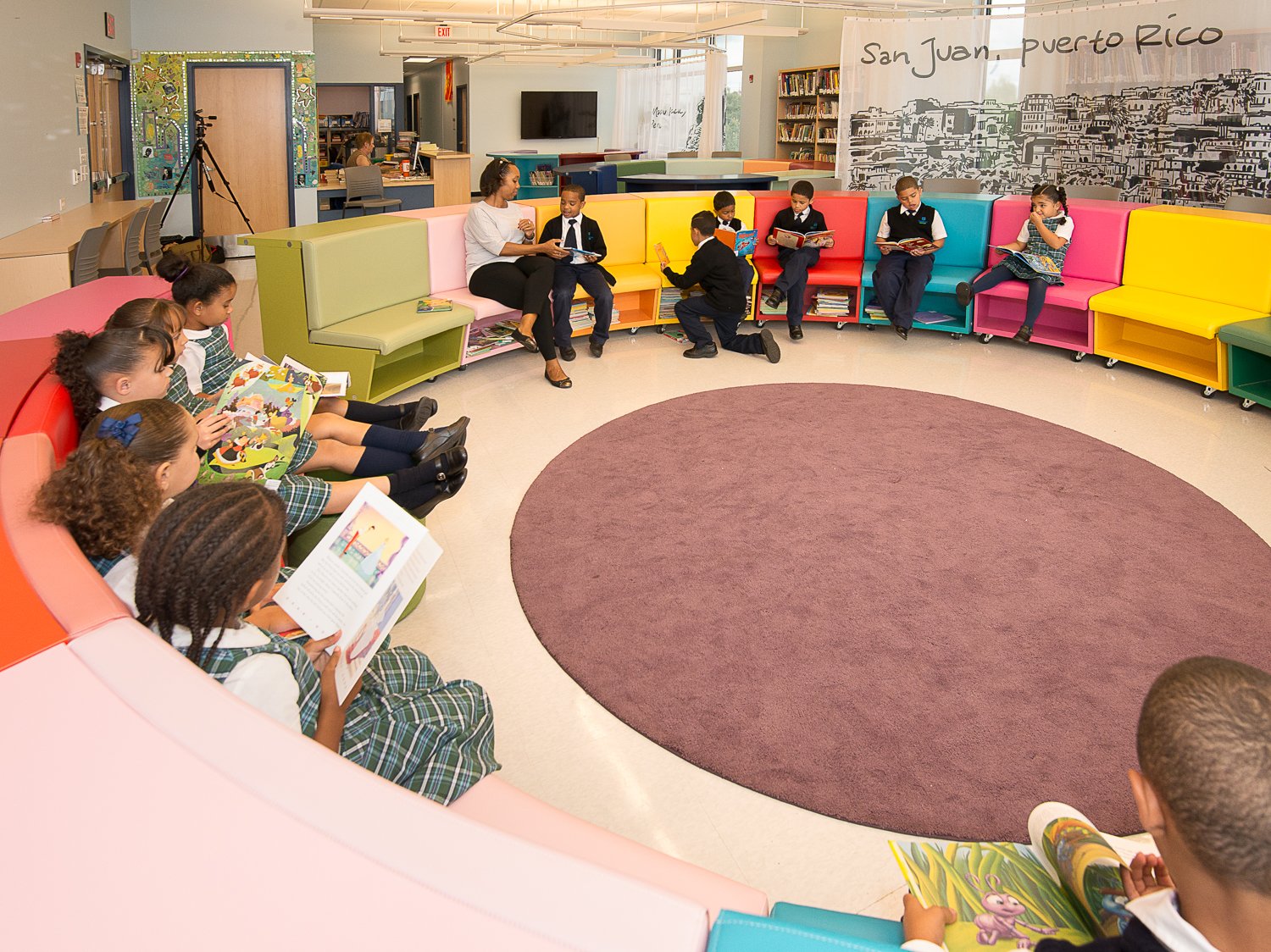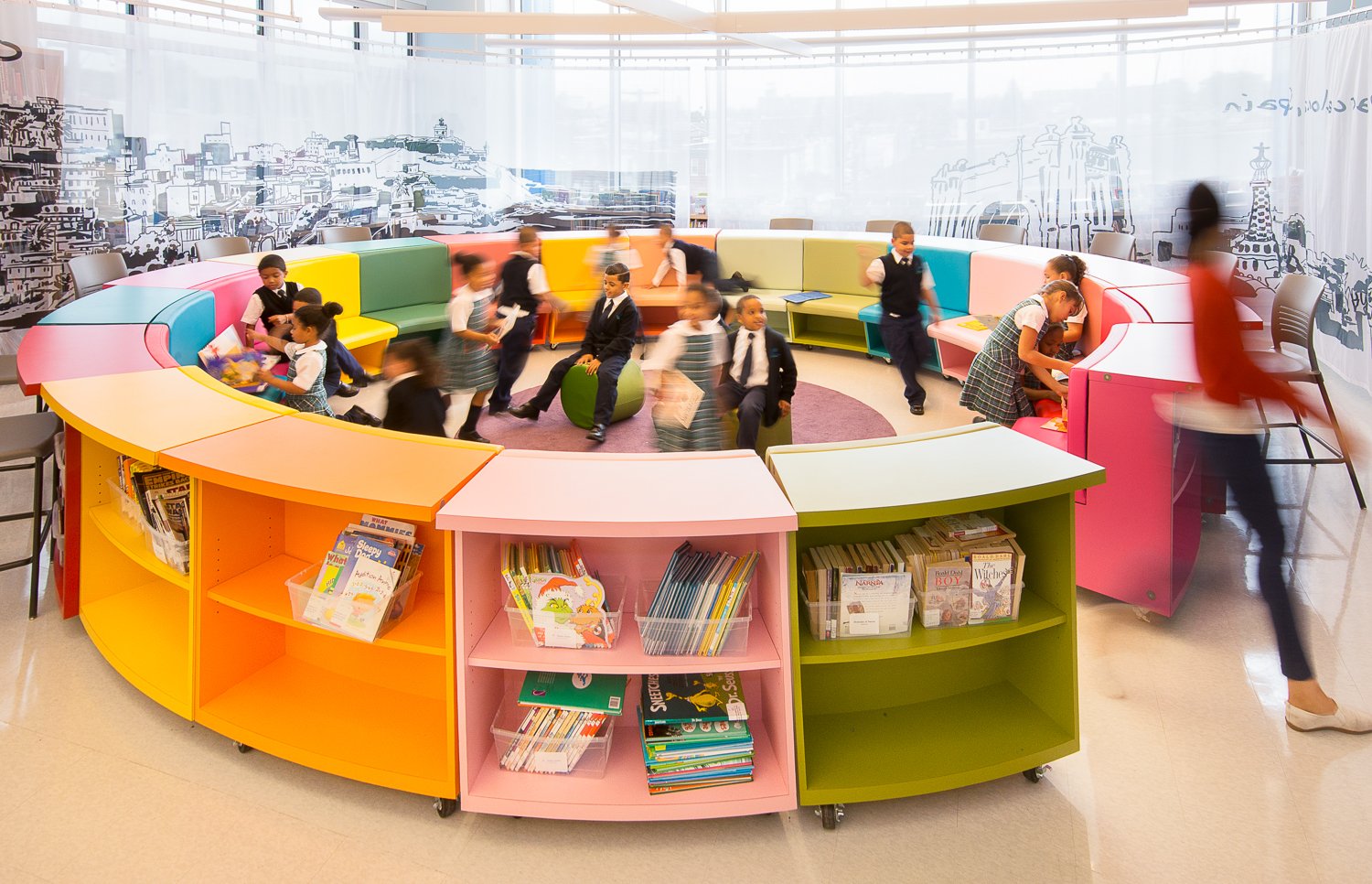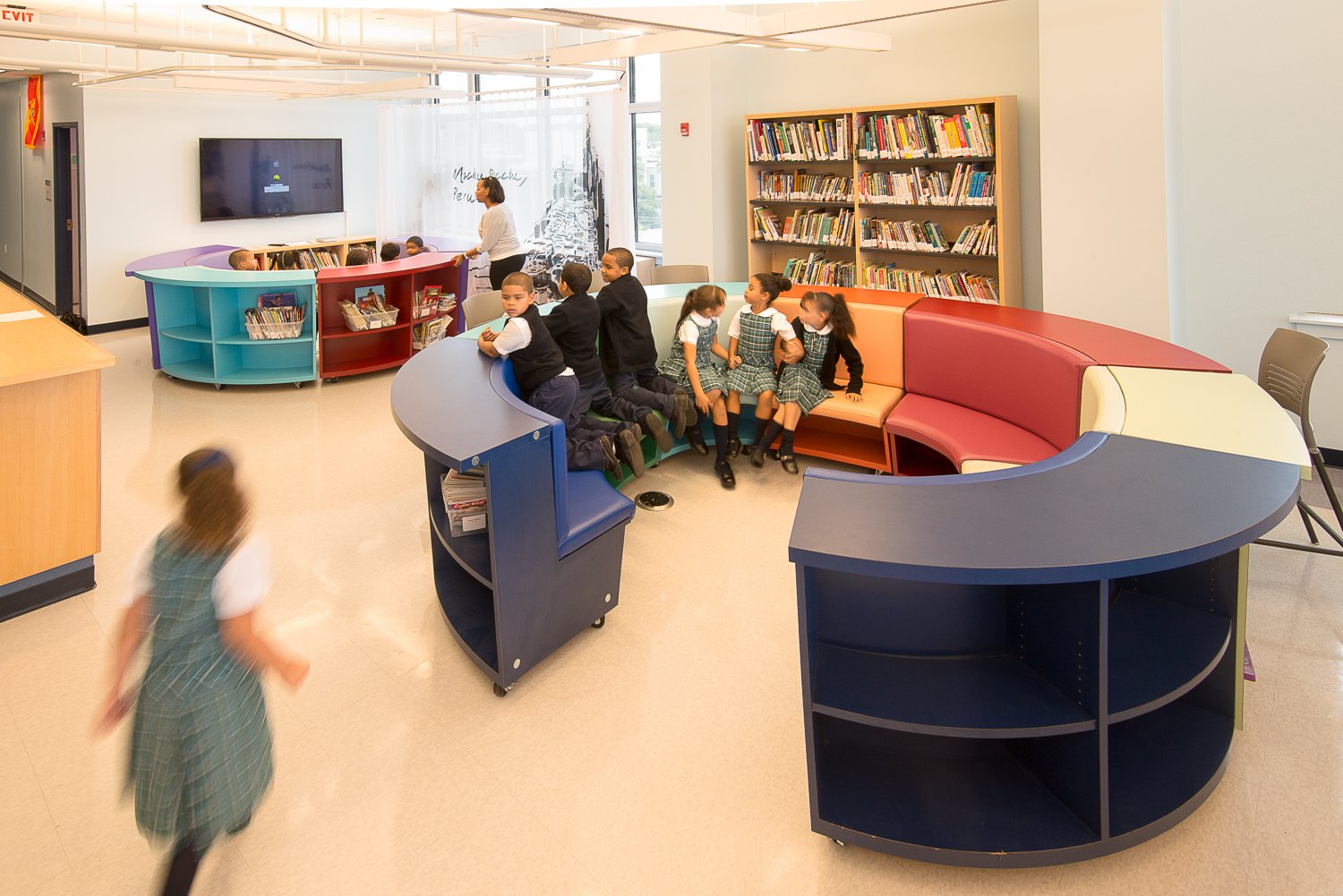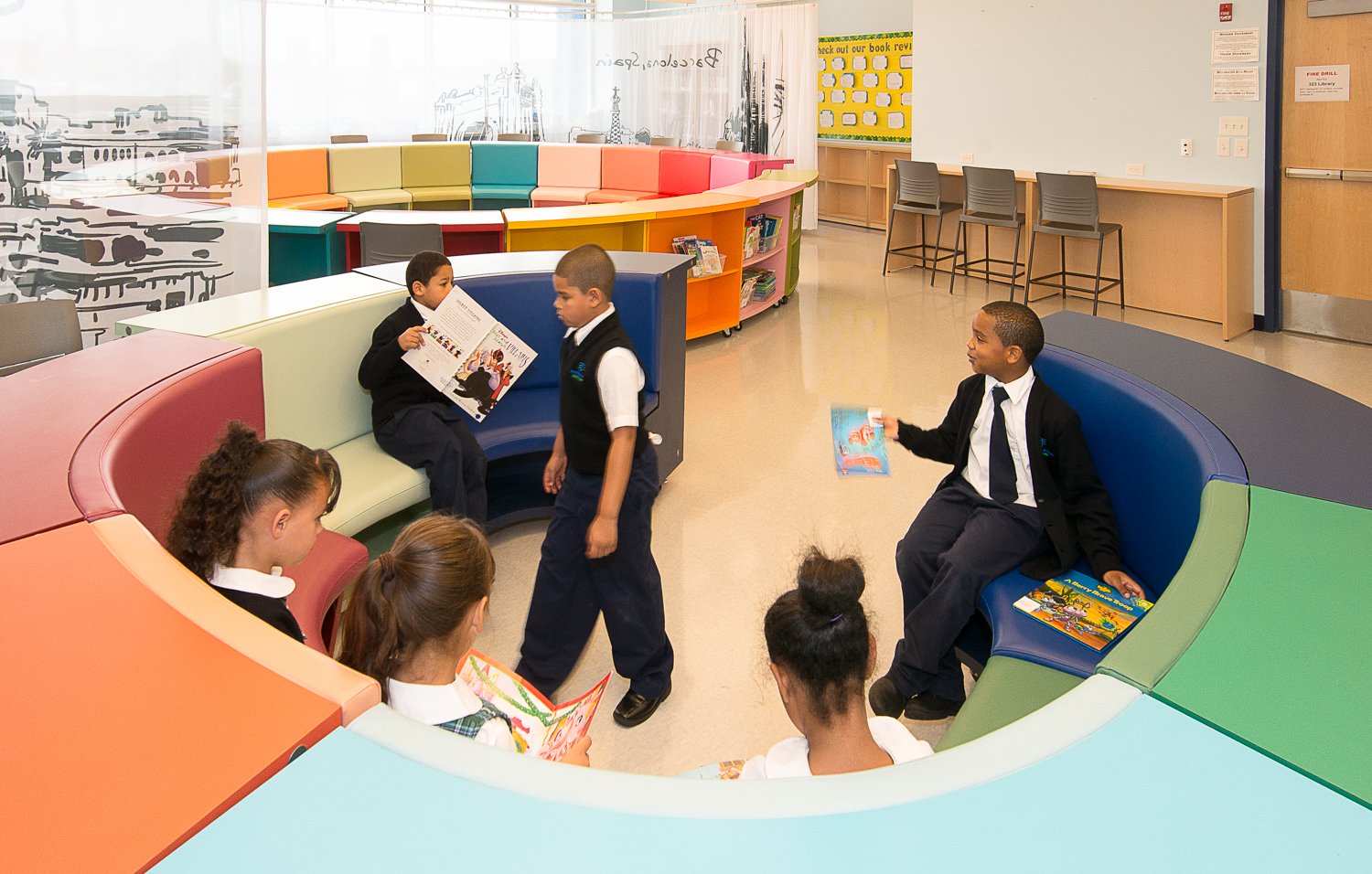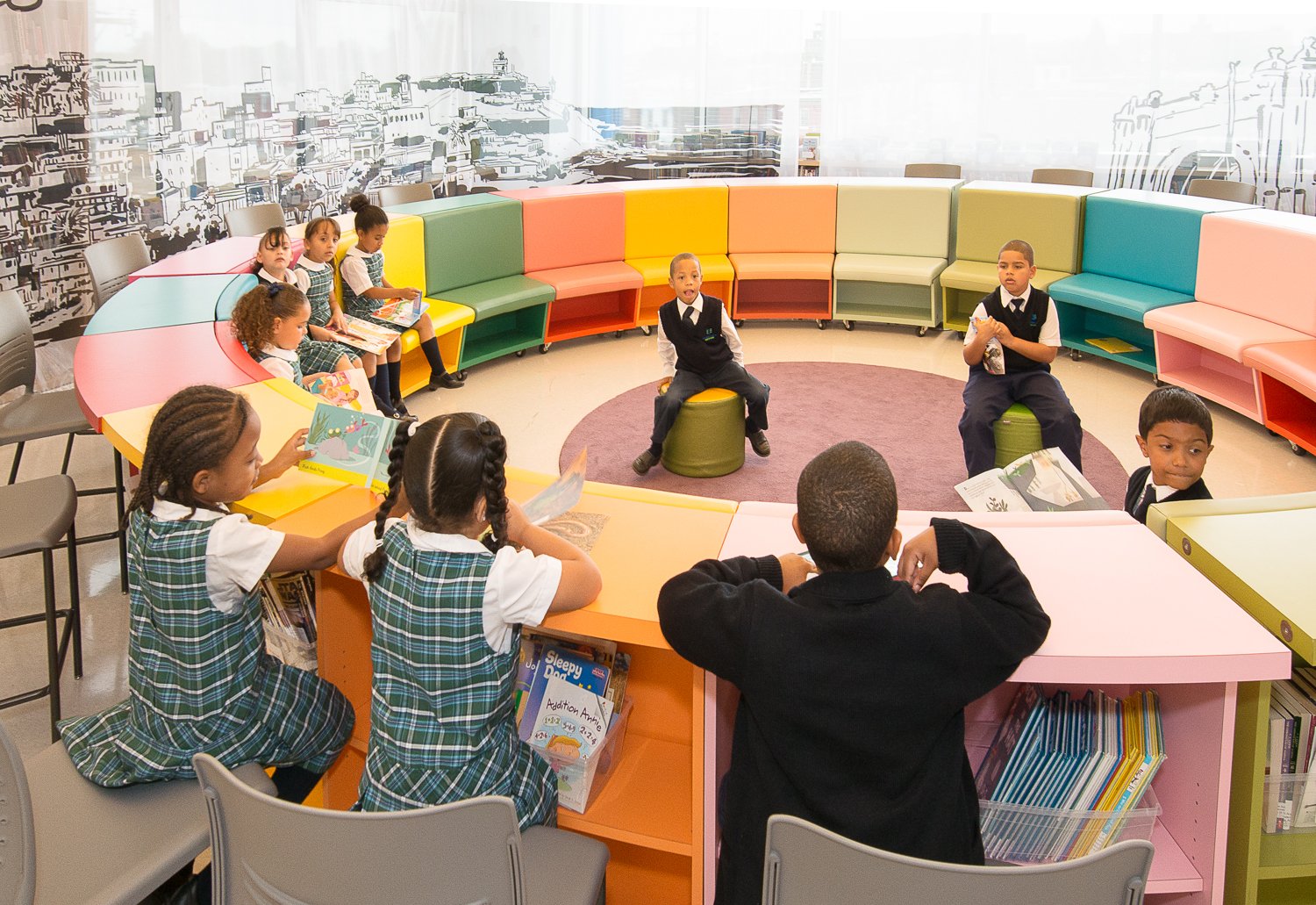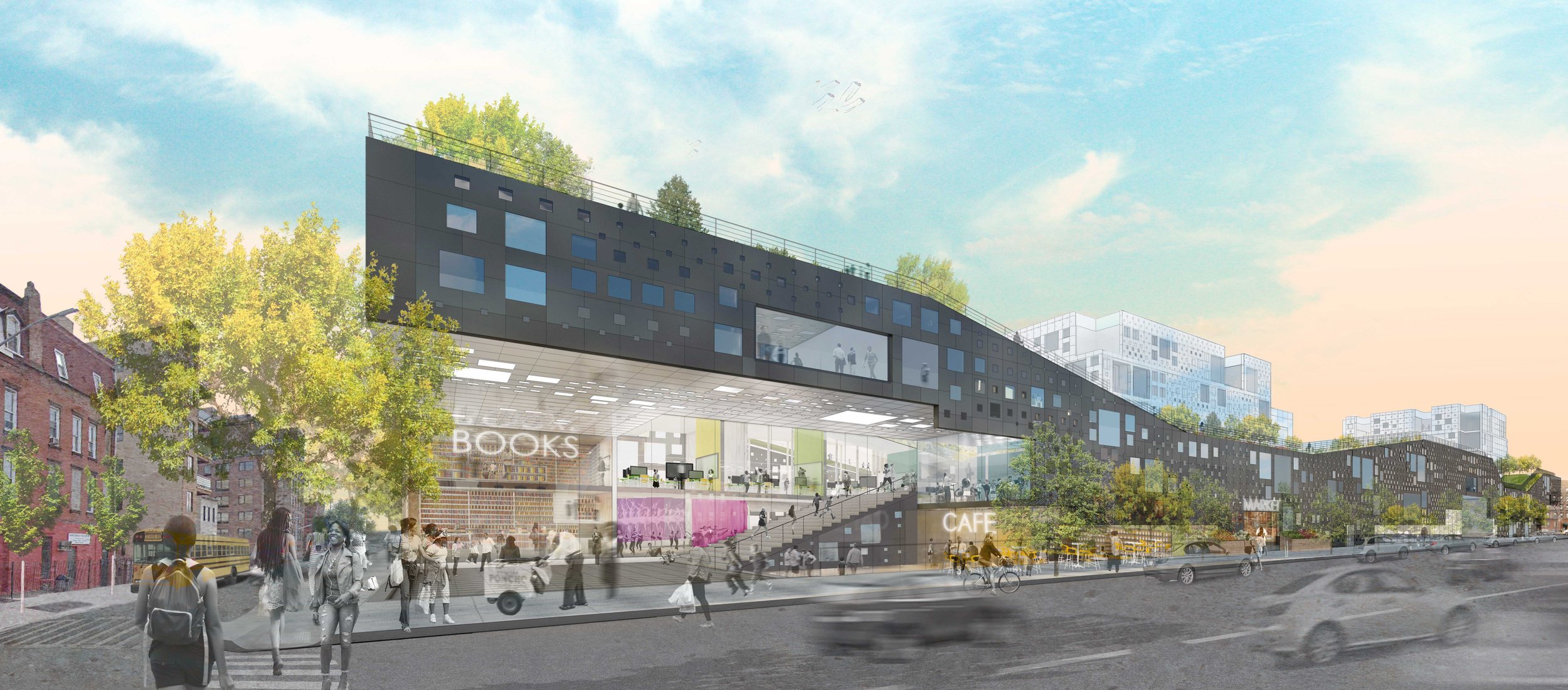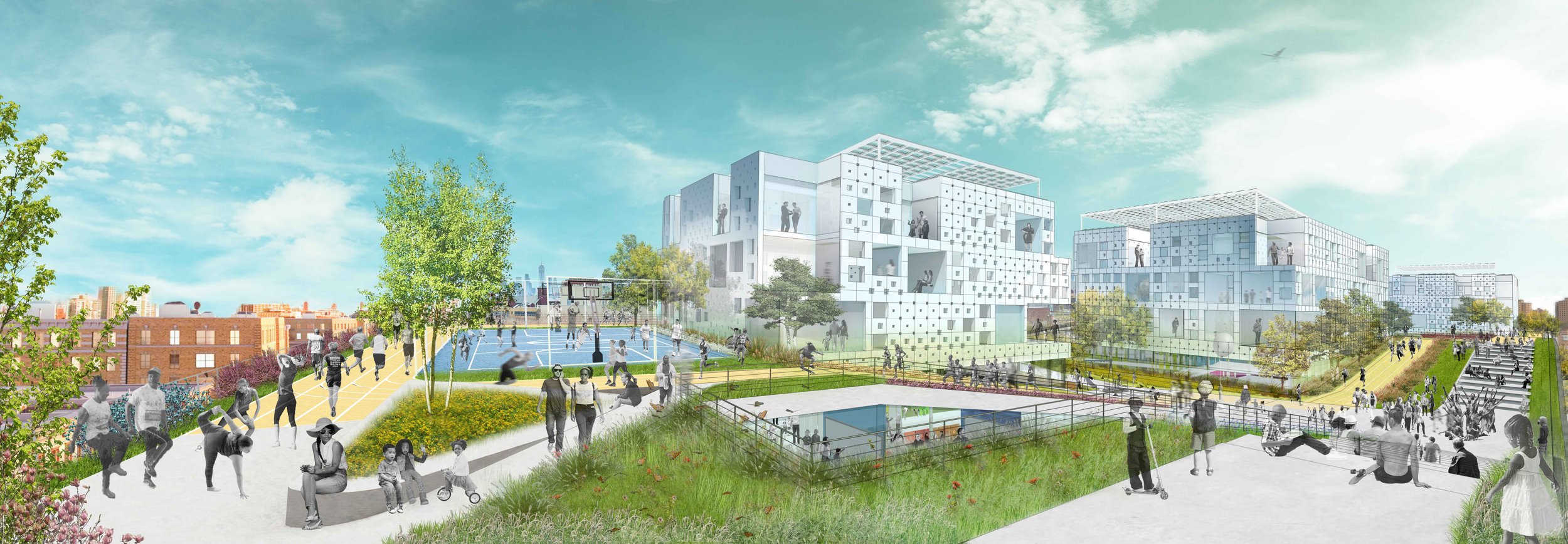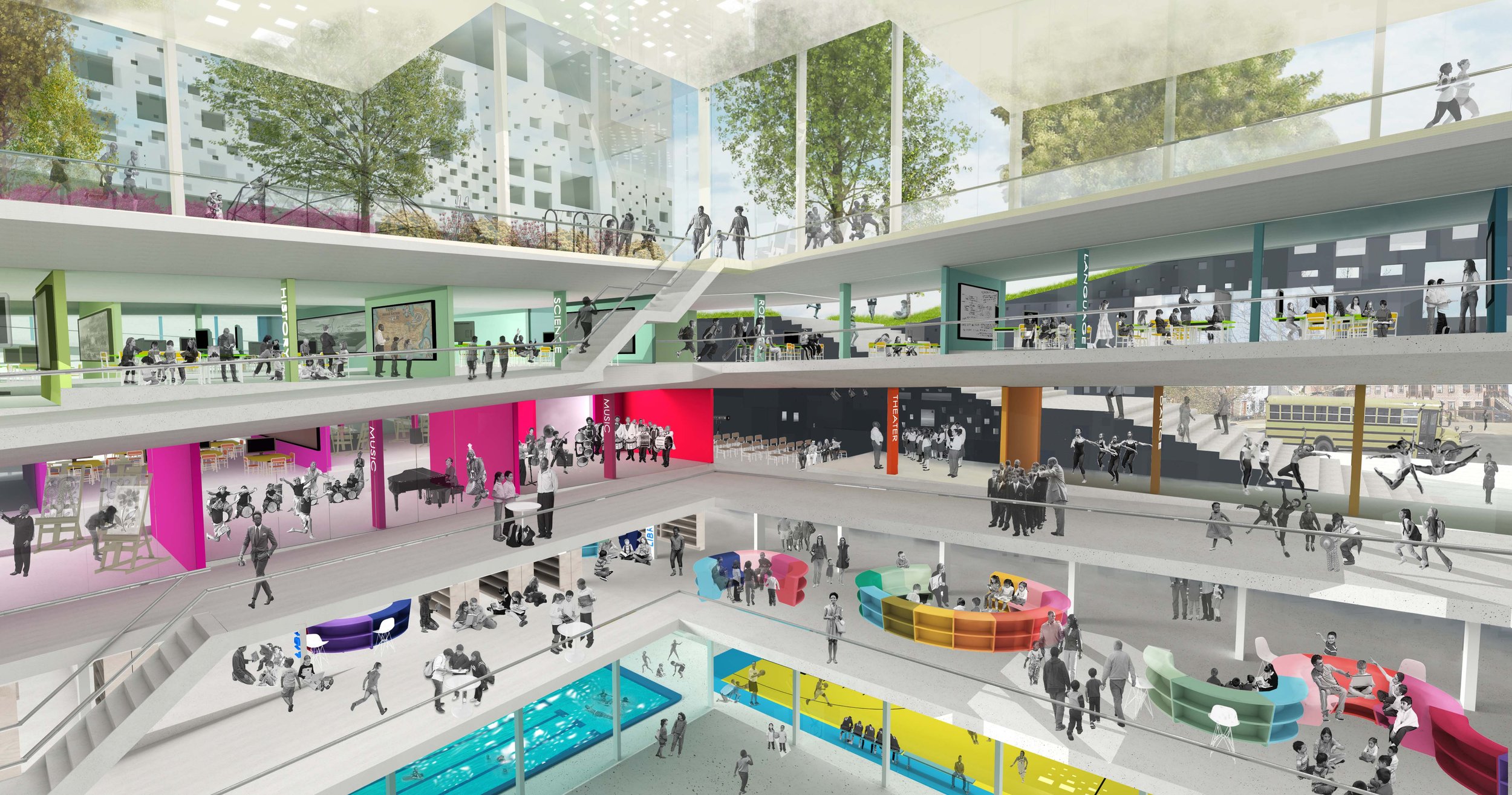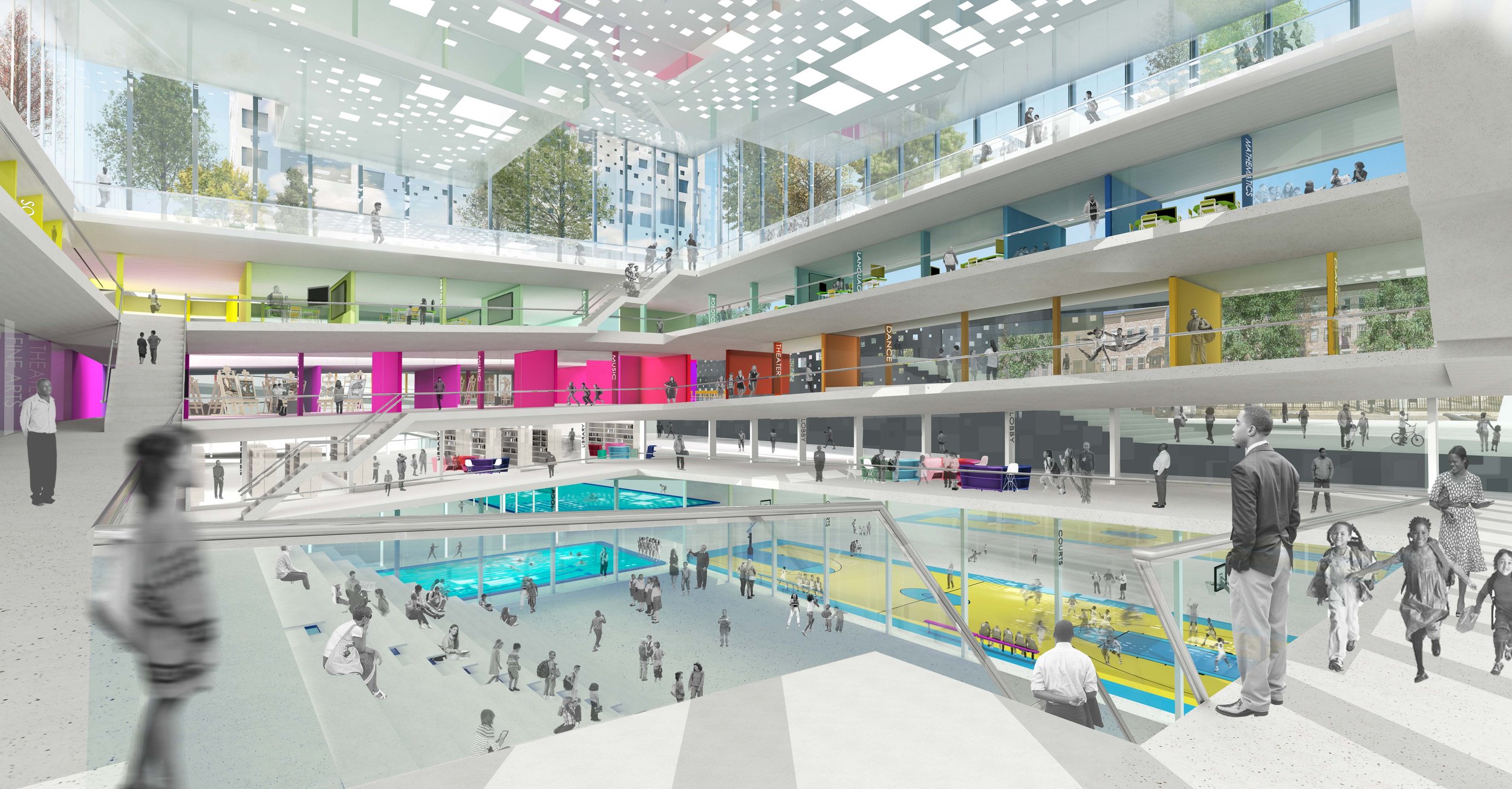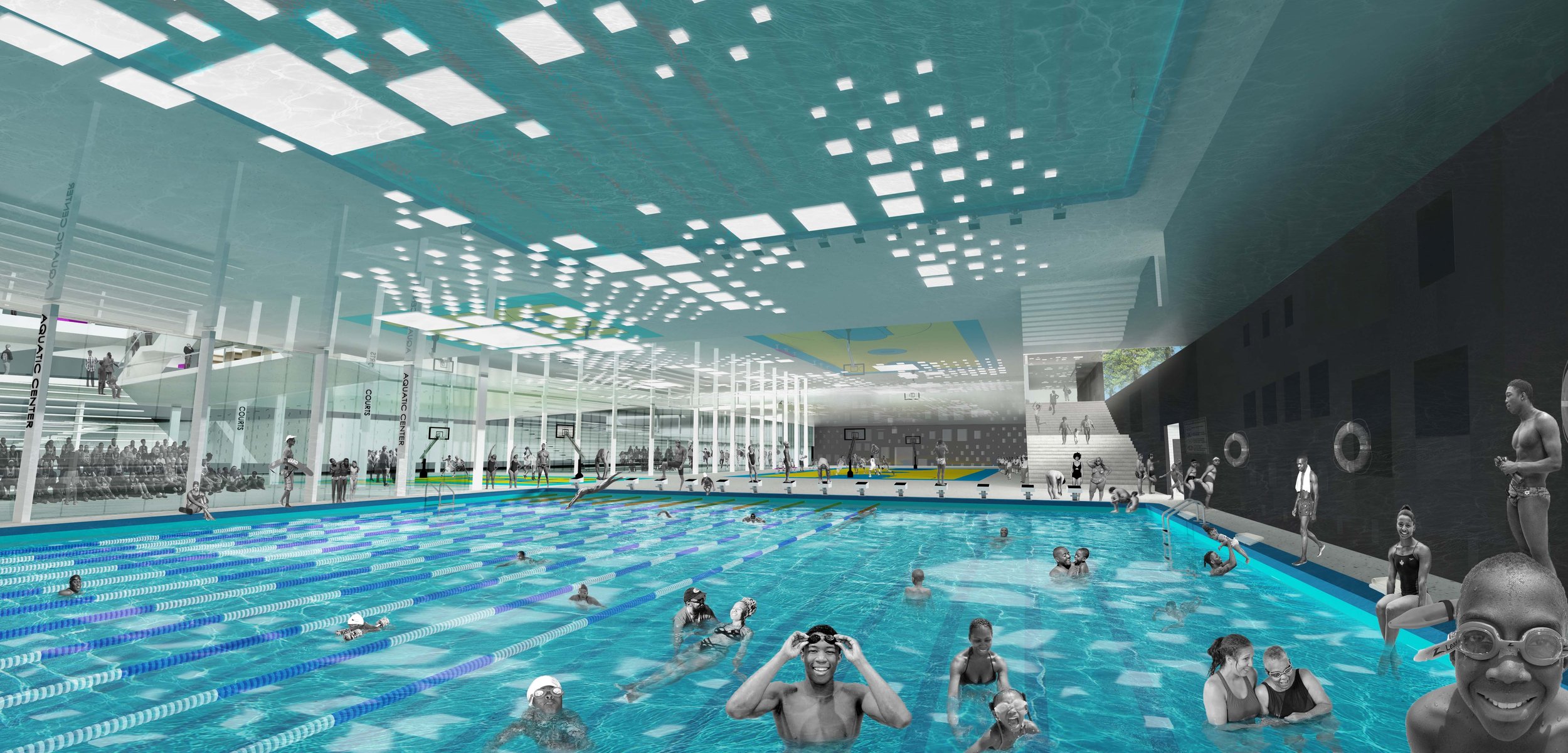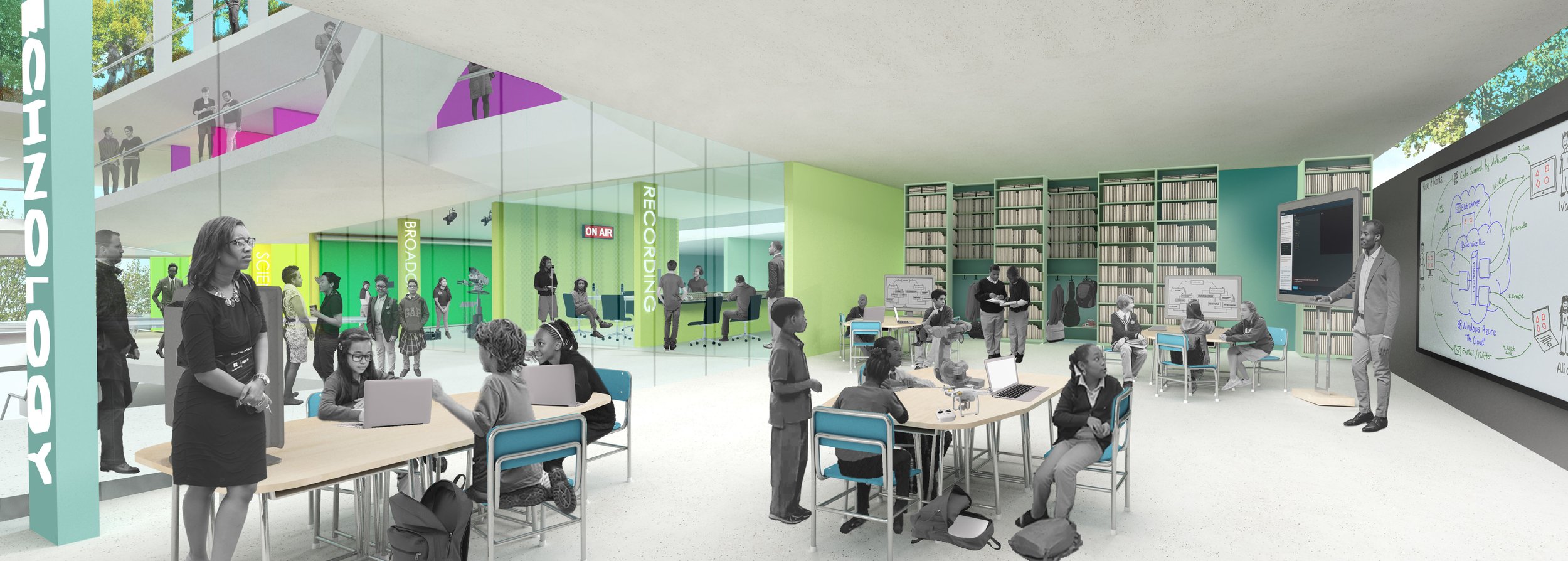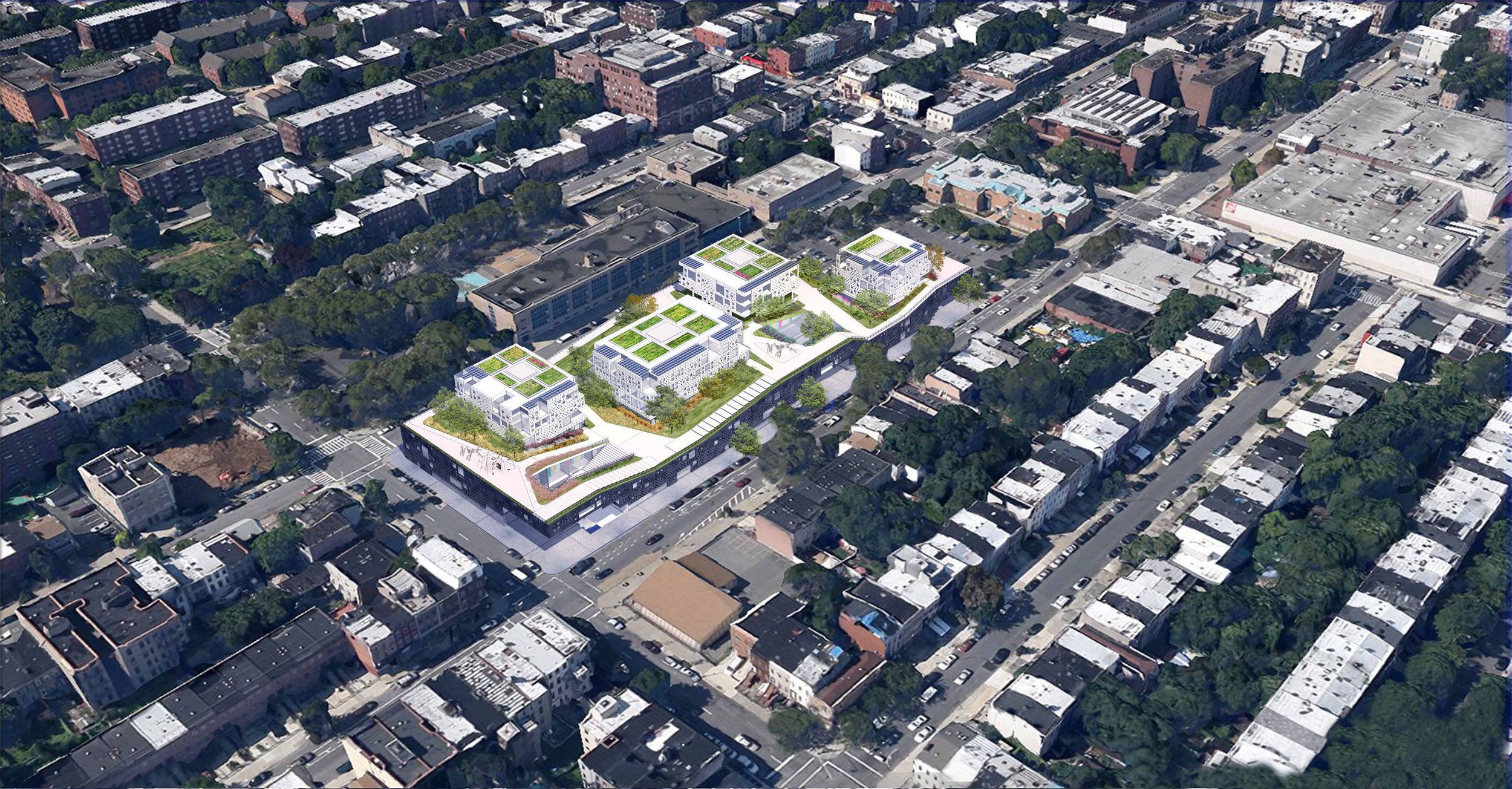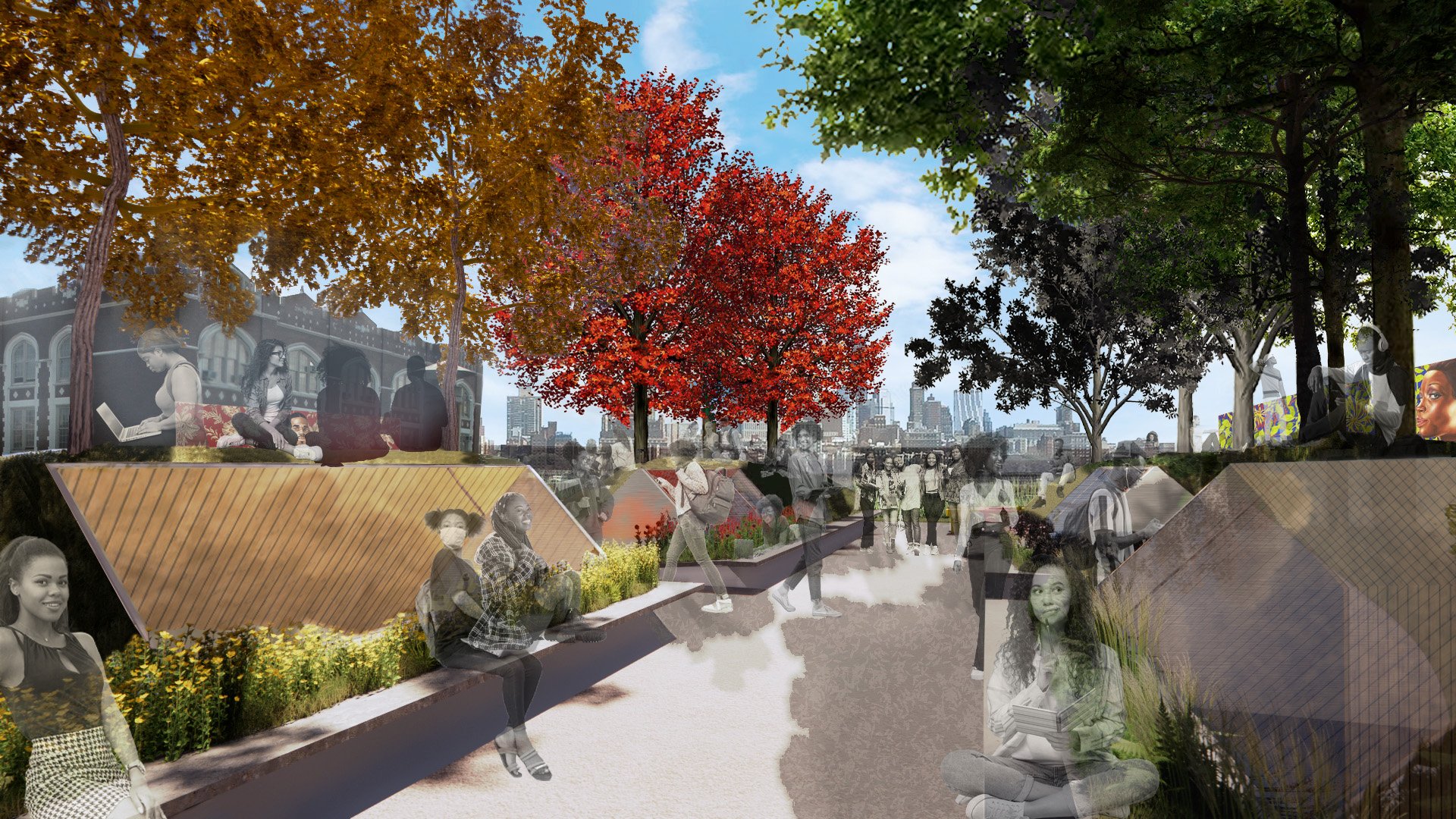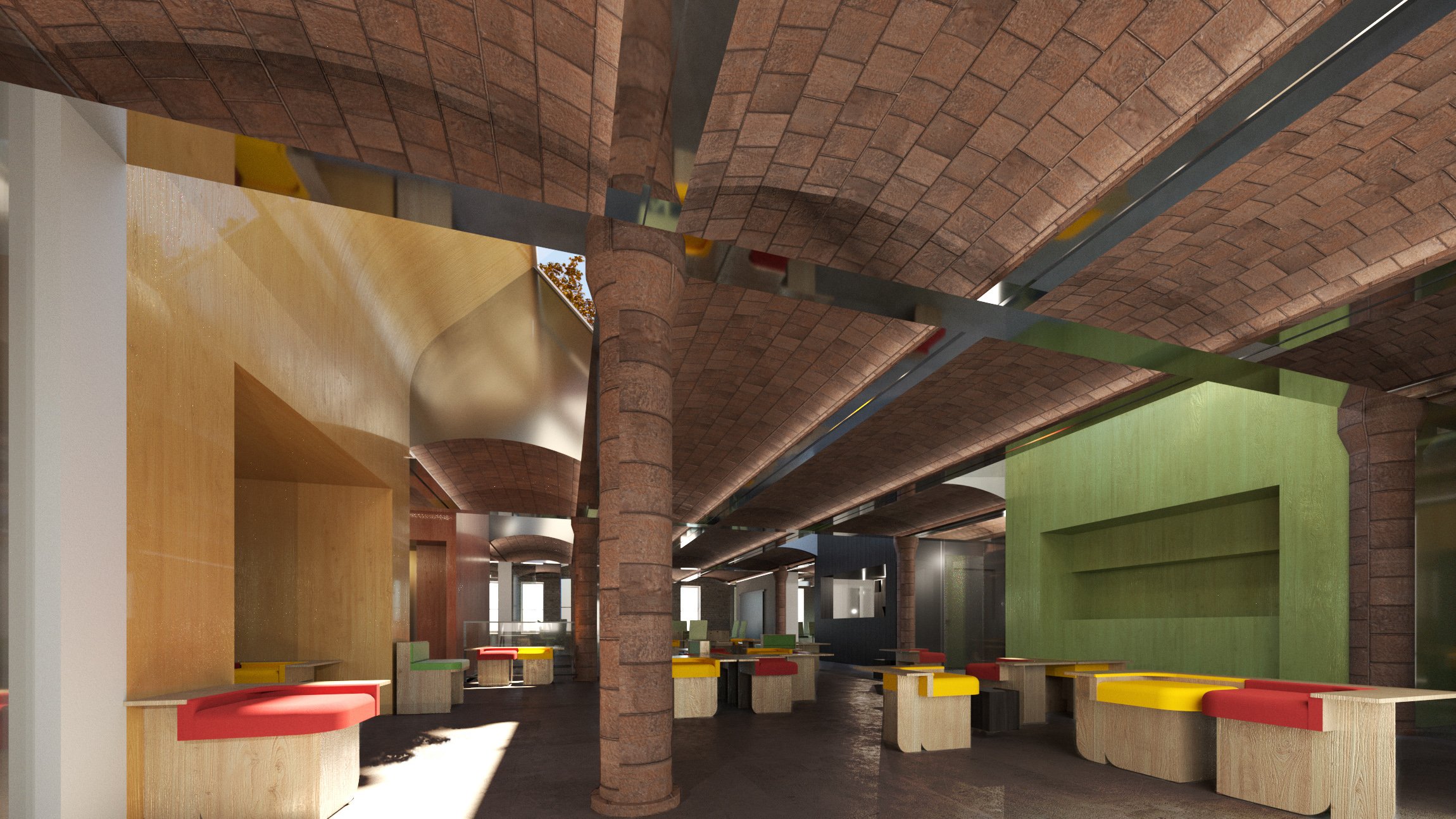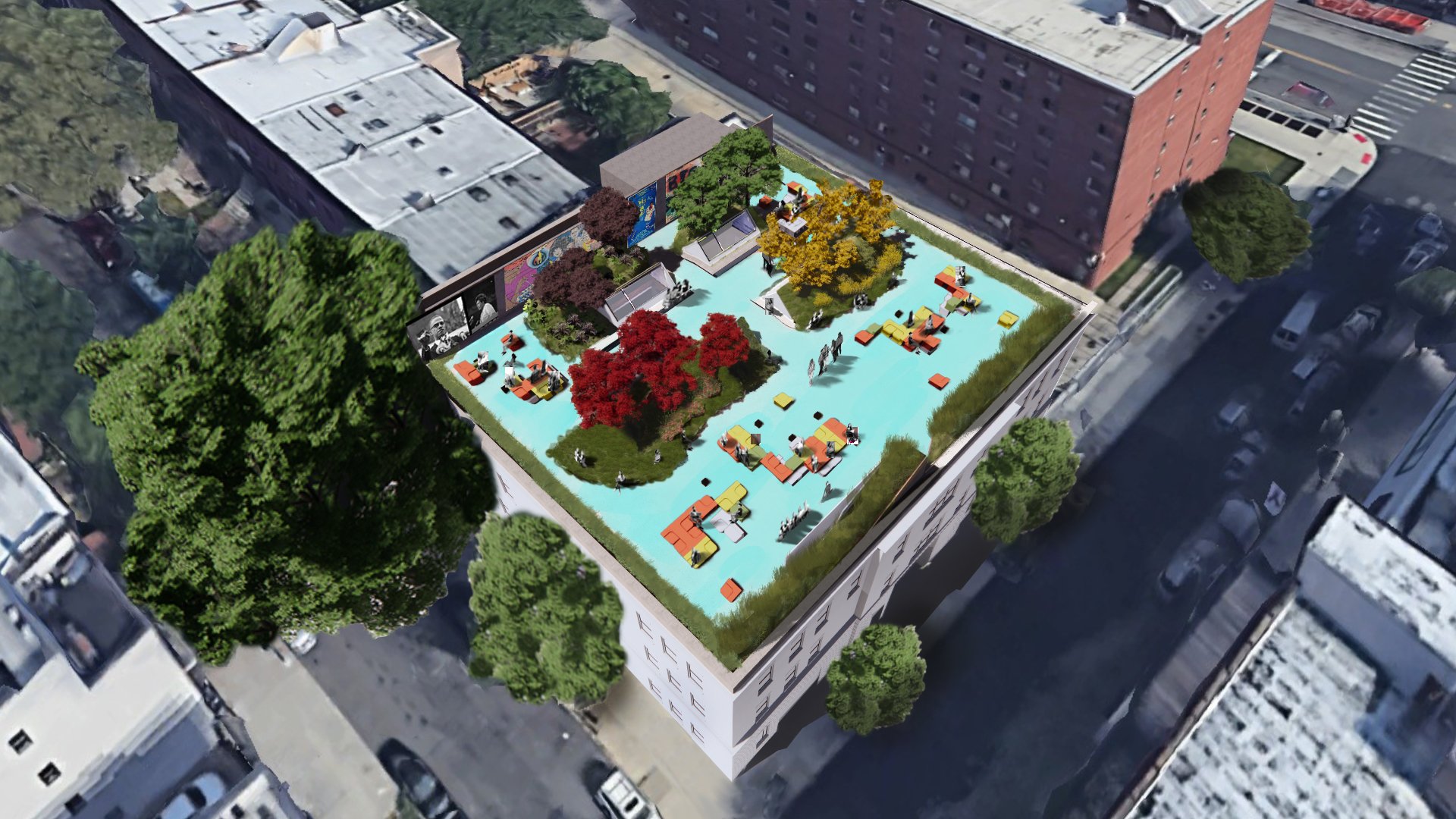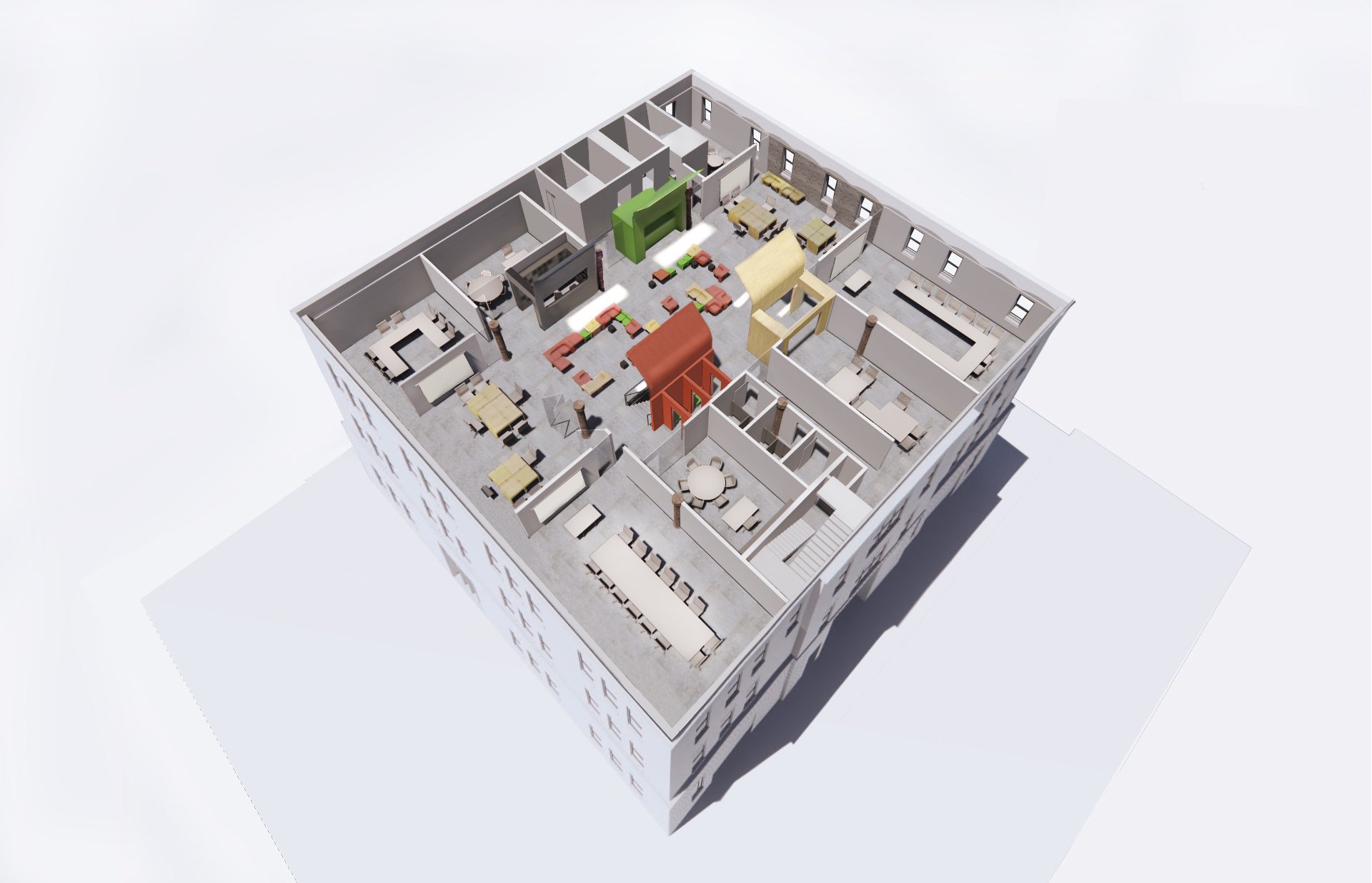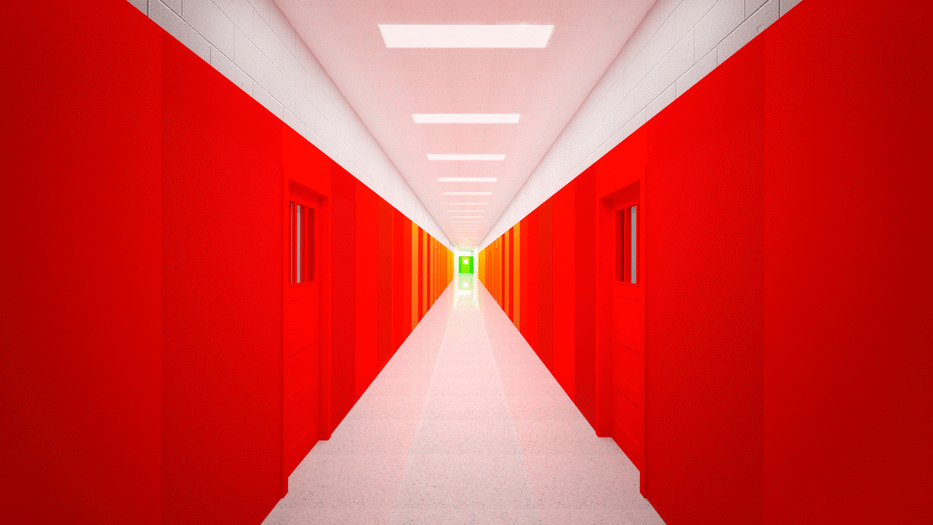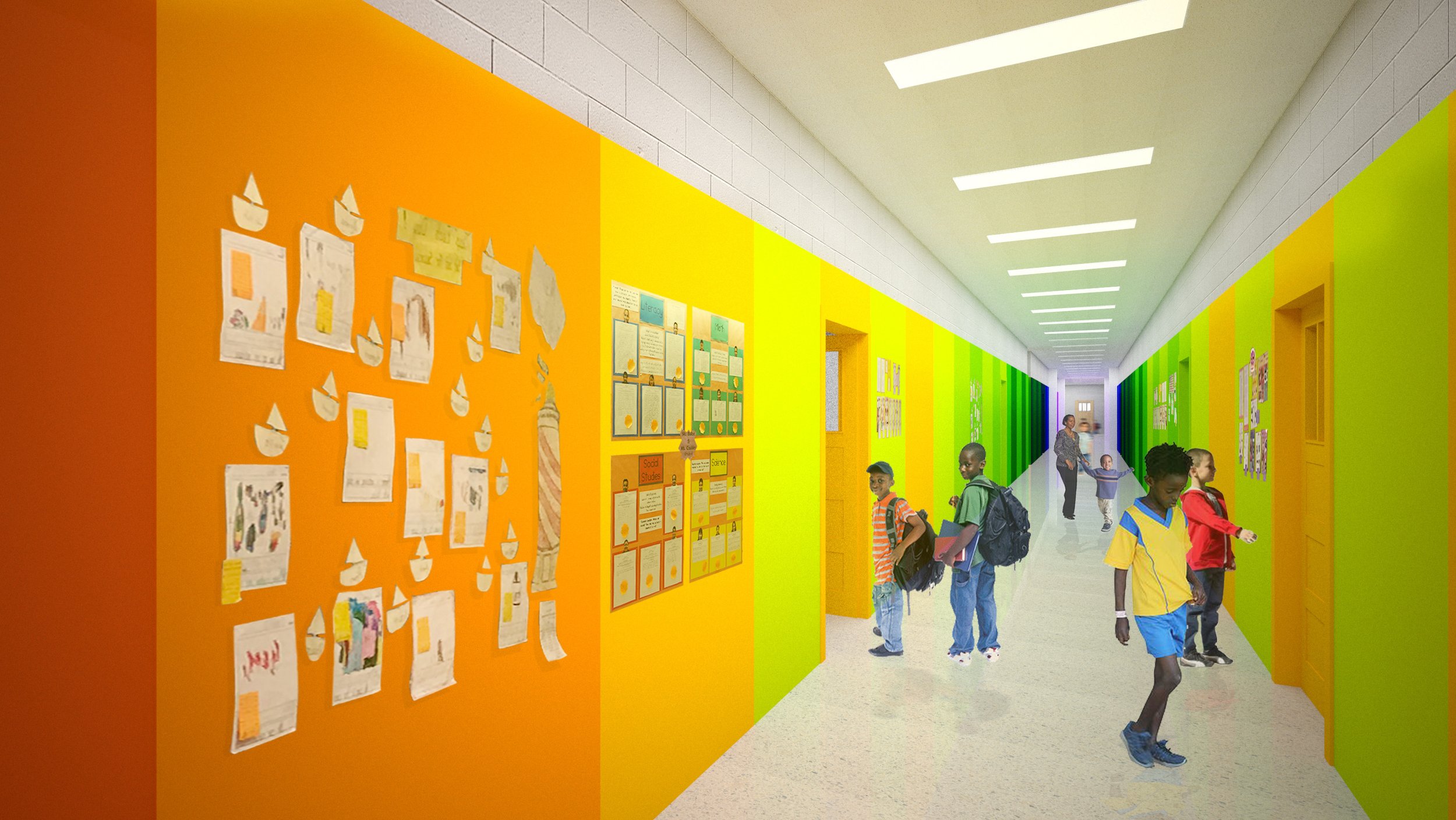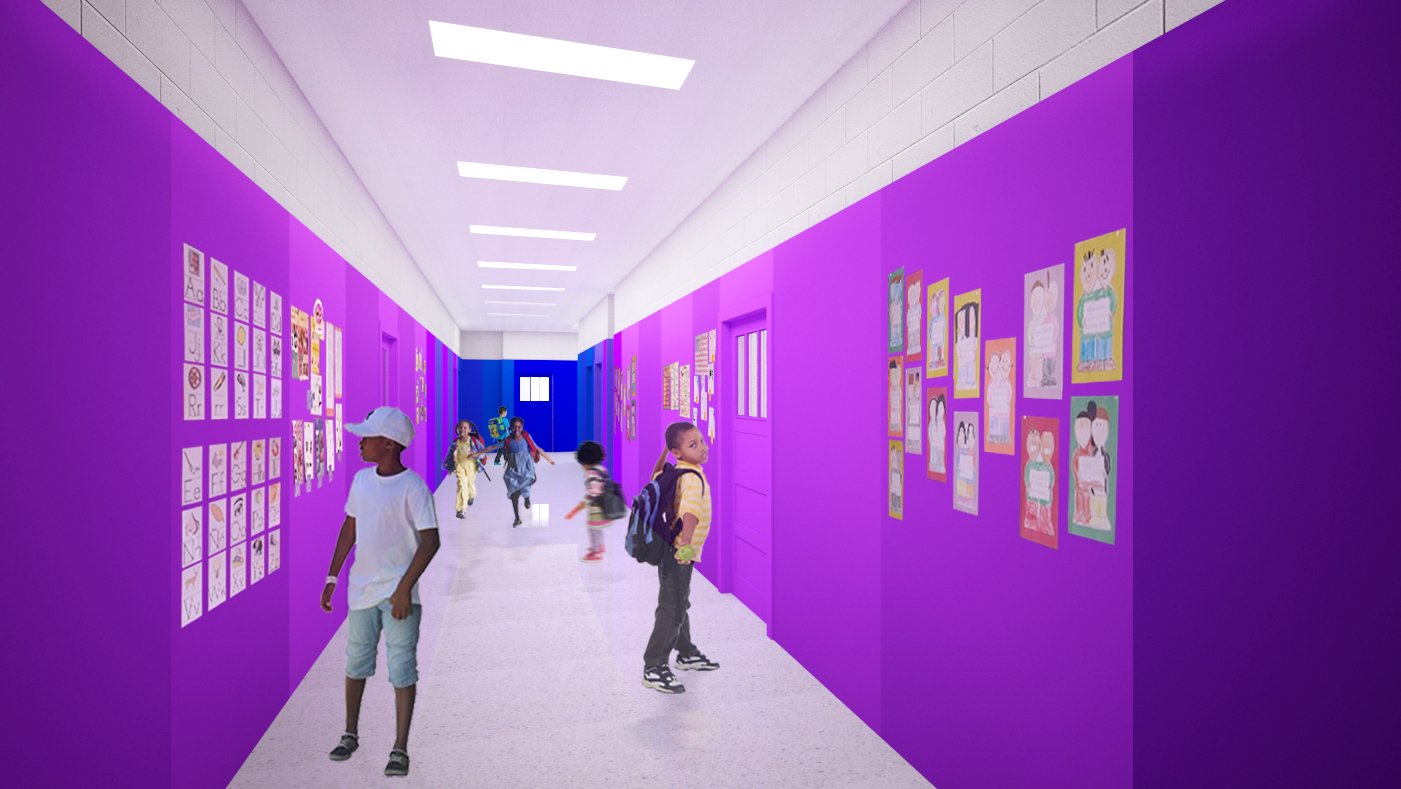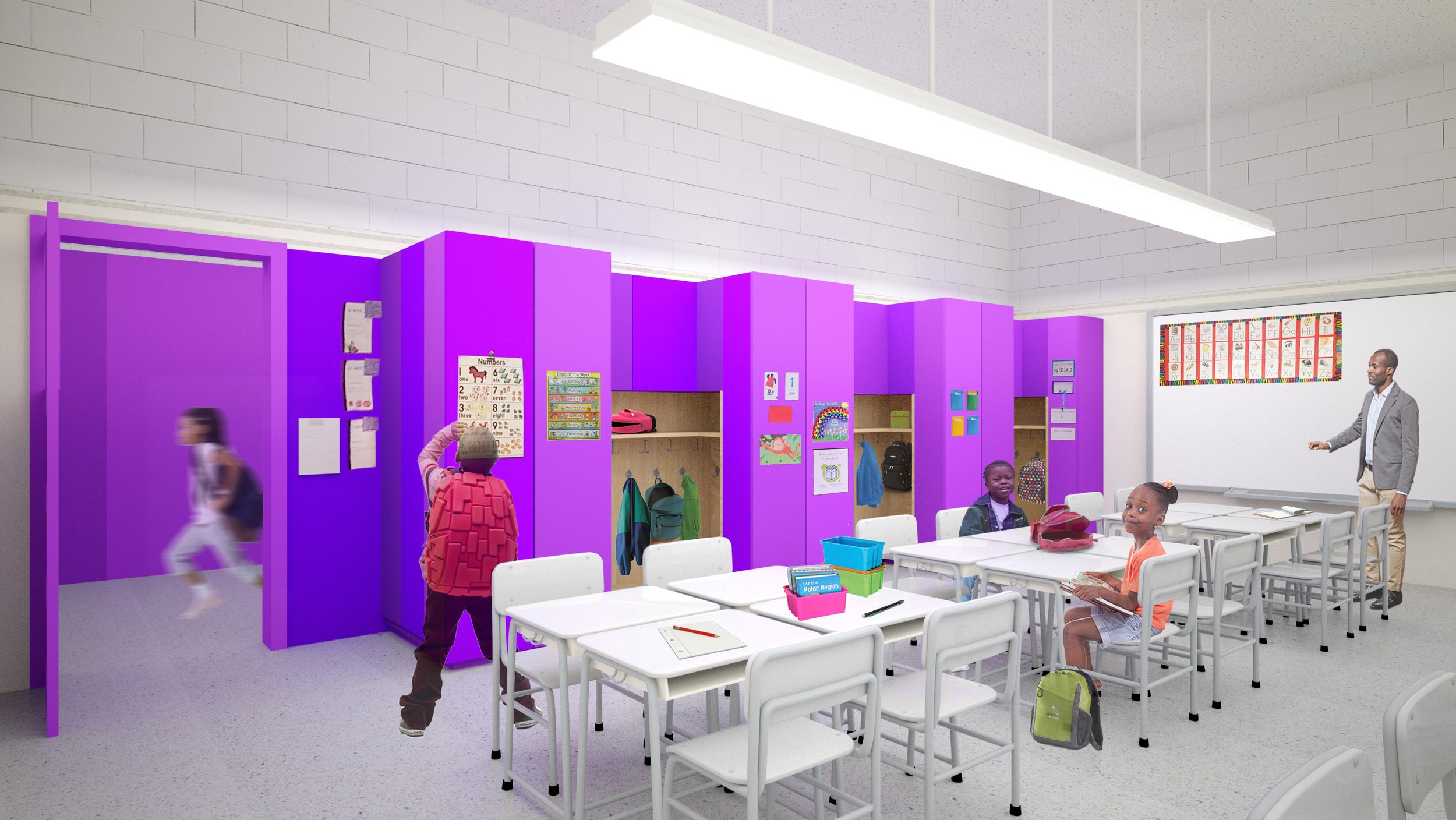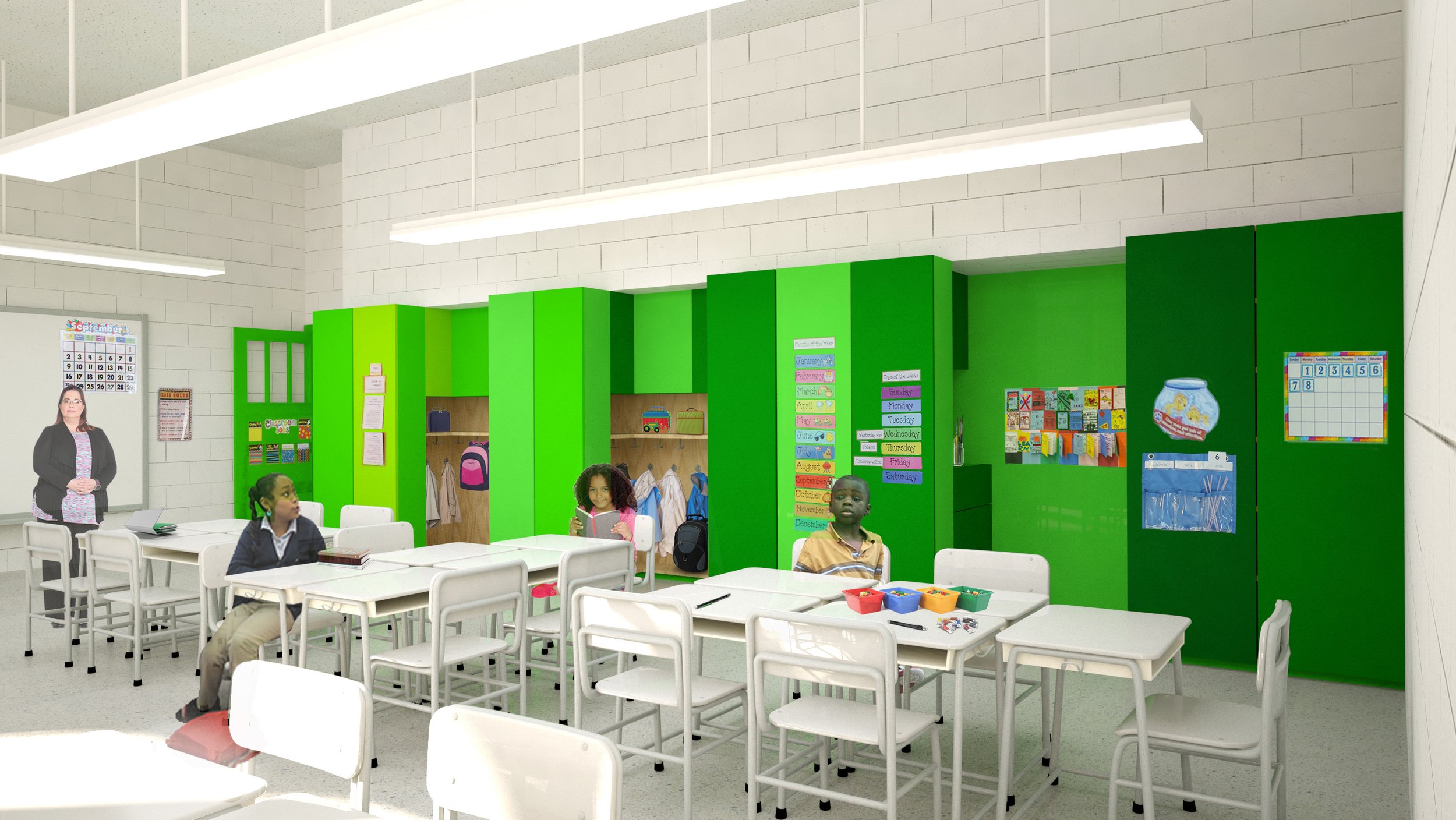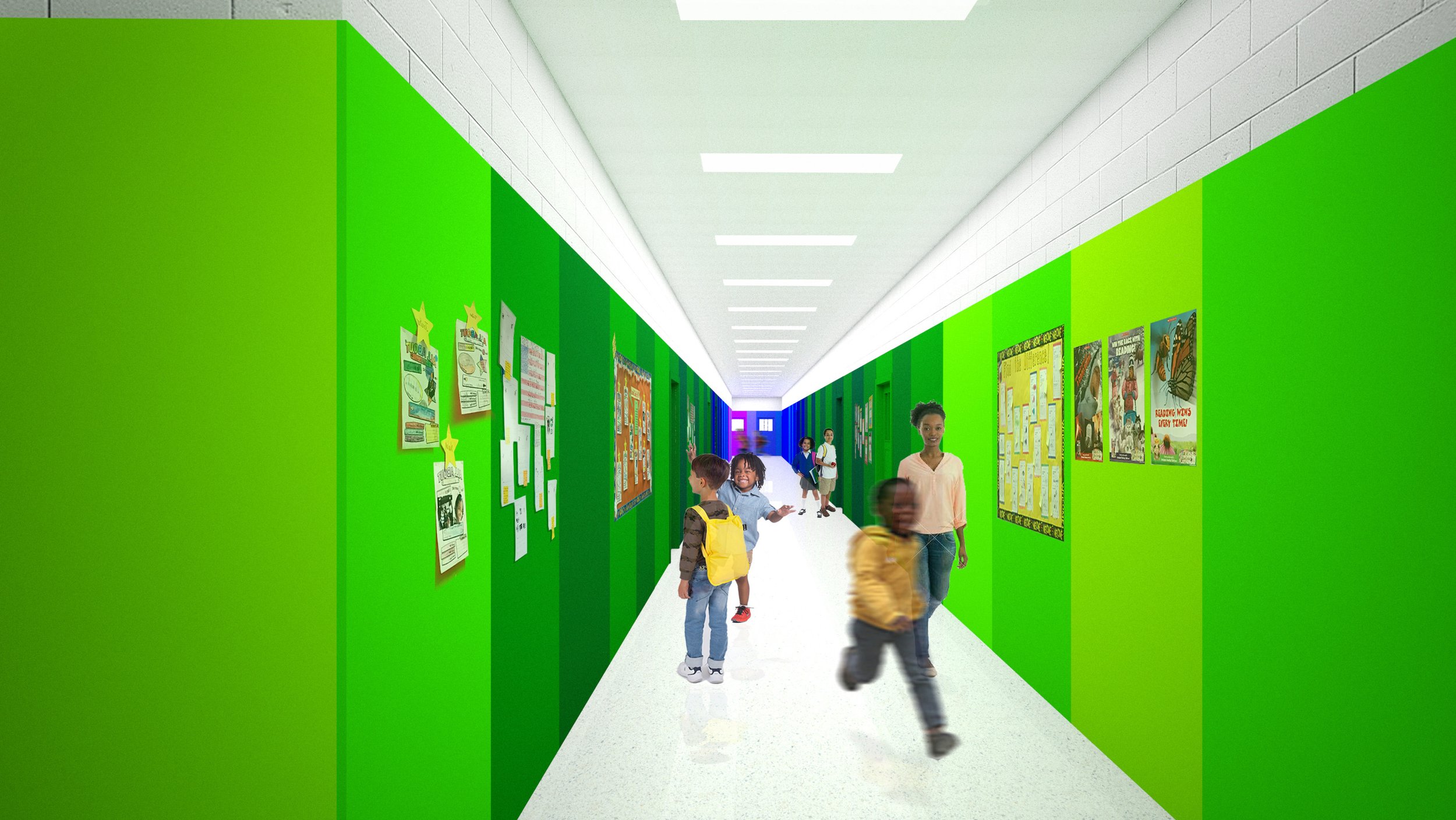Ten to One and sister non profit Ten for All (Ten to One for All) are synergistically dedicated to holistic and community-driven design equity and sustainability. In partnerships with community based organizations we invest half our resources to projects which support equitable and sustainable civic engagement, across a wide spectrum of types, scales and budgets, contributing over a half million dollars in services throughout our 13 year history.
We invest 50% of our resources to pro bono projects
Ember High School in construction
We have successfully completed, from fundraising through construction, such projects as the Pan American Public Charter School and Congreso de Latinos Unidos Library Community Workshop and the Ember Public Charter High School currently in construction, as well as the Bedford Stuyvesant Racial Equity and Community Innovative Campus, GrowHouse Community Resiliency Centers and Roots Corridors throughout Central Brooklyn and Start Lighthouse City-wide Public School Library design and implementation strategy the first open and more currently in development.
Our projects collectively build a more sustainable and equitable city
Start Lighthouse library hubs opening in the Bronx and expanding throughout New York City’s Public Schools in progress
Beggar's Wharf Arts Complex
Ten to One’s core focus on design equity is implemented at a multitude of scales and shapes our practice and process. Diversity, equity and inclusivity can be manifest in project scope, team building, listening to and collaborating with constituencies and communities, spatial planning for inclusivity and accessibility, spatial design enabling and celebrating the individual within a social and environmental context, and the manifestations of details such as how a brick signifies unit, common and human-centric fabrication and assembly.
Pro bono is a necessary means by which we deliver on our goal of design equity
Bedford Stuyvesant Racial Equity & Community Innovation Campus
Ten to One advocates for inclusivity in our projects as well as fosters an inclusive studio practice and process. We are a studio of individual voices across a spectrum of backgrounds, identities and skill sets. At present, as has been the case throughout our ten years with a stated dedication to inclusivity, all employees represent diverse nationalities, backgrounds, races, genders, LGBTIQA+, and span the neuro-divergent spectrum.
Stakes are high and budgets are low






